
‘Everything we tear down now… will never return’




‘Everything we tear down now… will never return’







Although much can be done via video calls, sometimes your presence truly makes the difference. For those moments, we ensure you can travel with peace of mind. That’s why we offer convenient departure times, comfortable seats and excellent service. From relaxing lounges to the opportunity to earn free upgrades with our business loyalty programme bluebiz. With KLM for Business, you can fully focus on your work and other important business.

There are a few things I truly love about our industry: creativity, inspiration, the opportunity to meet people from other cultures, and foreign foods I haven’t tried before. It’s the reason I work hard — but with immense joy — to keep this industry and all its stakeholders wellinformed, fit, and ready for the future. That’s why I was so happy with the speech by KLM CEO Marjan Rintel, in which she beautifully emphasized why airlines and connectivity are so important — not only today, but for the future as well.
Creativity, I found in the interview with Inspire DMC, who bring groups to rugby in Edinburgh — and that alone is always a good idea. Rugby, I believe, can teach a group more about team spirit than a three-week session in the Mongolian desert. We also take a look at the new Michelin Keys, awards for outstanding hotels. I’m not always keen on qualification awards, but I can understand that those who received them were ecstatic — and probably rightfully so. Still, as we often experience, every stay is personal and every stay is different. The best award of all is a returning guest.
And so, I hope to see you again — after reading this magazine — in 2026. Wishing you wonderful travels and great enjoyment reading Summit.
Tijn Kramer Editor-in-Chief
Editor-in-Chief
Tijn Kramer tijn.kramer@travmedia.nl
Editors:
Arjen Lutgendorff, Sharon Evers, Dylan Cinjee, Bart Matthijs, Pieter Weymans, Eva Hopstaken, Theo de Reus.
Press releases and info: info@summitbenelux.com TRAVelMEDIA
Summit Benelux. Arendstraat 33A, 1223 RE, Hilversum. www.summitbenelux.com
Design: Iris Beenen
Publishers: Tom van Apeldoorn T.J. van Apeldoorn
Sales & Marketing: Sales and information about advertising, etc.
Tina Bakker, Dennis Ebbers, Dennis de Groot Sales@travmedia.nl
SUMMIT Benellux is a
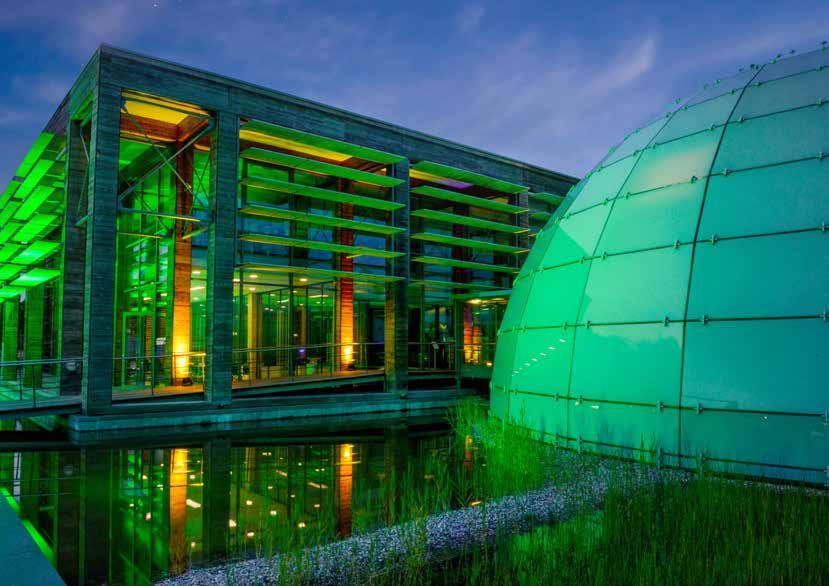

In Hannover, sustainability isn’t just a goal; it’s part of everyday life. Long before “green” became a global trend, the city was already shaping its future around environmental responsibility, innovation, and community. Today, Hannover shows how a destination can grow sustainably and why that makes it the perfect place for the meetings and events industry of tomorrow.
Programs like ÖKOPROFIT Hannover help local companies save energy, reduce emissions, and use resources more efficiently. At the same time, HANnovativ is transforming Hannover into a true Smart City, where digital progress, climate protection, and citizen participation go hand in hand. With a well-developed network of e-mobility, sharing options, and countless cycling routes, getting around sustainably is easy and convenient.
In Hannover, sustainability also means quality of life. The Eilenriede, Europe’s largest urban forest, stretches right into the city center and offers space to relax and recharge. Just around the corner, creative neighborhoods such as Linden and List invite visitors to explore cafés, galleries, and local culture. Life here feels balanced, authentic, and connected.
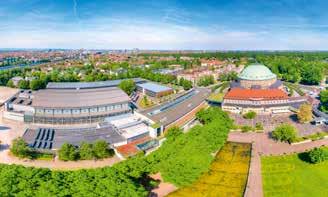
Hannover’s central location in the heart of Europe makes it easily accessible by train, plane, or car. Once here, everything is close by. Venues, hotels, and attractions are within walking distance, creating a compact and stressfree event experience. It’s a city where sustainability and efficiency naturally come together.
At the center of it all stands the Hannover Convention Bureau, your local expert for sustainable and impactful events. From green venue sourcing to tailor-made social programs, the team supports organizers with creativity, expertise, and genuine enthusiasm.
Nice to know: You can meet the Hannover Convention Bureau in person at IBTM World in Barcelona (18–20 November 2025) together with the German Convention Bureau at Stand F70. Come by and experience Hannover’s sustainability-driven spirit firsthand. We’re looking forward to meeting you!
In Hannover, the future of responsible meetings isn’t being discussed, it’s already happening.
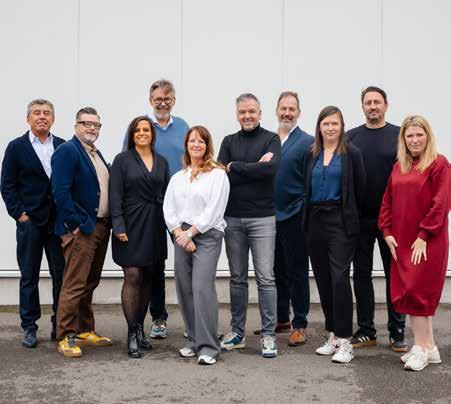
Event Masters, the Belgian fullservice event communication agency celebrating its 30th anniversary, has announced a major strategic transformation. The company will now operate under the name Group Event Masters (GEM), bringing together its expertise under three brands: Event Masters for corporate events, Runmate for congresses and Team Masters for
teambuilding. According to CEO Bert Knuts, the new structure reflects an evolution rather than a break from the past. “Each brand has its own identity but remains united by shared values: creativity, reliability and a human touch,” he said. The reorganization allows GEM to respond more effectively to the evolving needs of the event and communication industry, where

ATPI Sports Travel, part of the international ATPI Group, has renewed its role as the official travel supplier for the Netherlands Olympic Committee
(NOC*NSF), extending a collaboration that has lasted more than 20 years. Under the new agreement, ATPI will coordinate all travel logistics for
clients increasingly expect strategic impact alongside flawless execution. COO Johnny Machiels noted that the group structure strengthens operational excellence, while CFO Olivier Meyskens emphasized its focus on sustainable growth and innovation. Event Masters remains the leading fullservice agency for corporate events and incentives, Runmate introduces a new approach to international conferences and congresses, and Team Masters continues its pioneering work in teambuilding, with inclusive and sustainable concepts. A central Operations team supports all three brands, managing logistics, technology and production. Head of Production Jolien Van Luyck said the team’s strength lies “in the invisible work behind the scenes,” ensuring reliability and excellence for every project. With this transformation, Group Event Masters aims to continue connecting people, strengthening brands and bringing stories to life through live communication.
TeamNL in the run-up to and during the 2026 Winter Olympic Games in Milan and the 2028 Olympic Games in Los Angeles. The company will oversee travel planning, accommodation and equipment transport for athletes, staff and delegations. “We are pleased to continue our partnership with ATPI to ensure the best possible arrangements for TeamNL,” said Hanneke van den Pol, Team Leader of TeamNL Games Operations. ATPI Sports Travel Managing Director Helen van Berkel described the renewal as “an incredible recognition” of the team’s experience and innovation in managing complex travel operations. With nearly three decades of expertise in organizing logistics for global events such as the Olympic Games, FIFA World Cup and The Ocean Race, ATPI Sports Travel has built a strong reputation for reliability and customized service. Operating in more than 100 offices worldwide, the company continues to play a key role in supporting elite sports organizations around the globe.
At Seaside Collection, we continue to elevate the MICE experience with a curated blend of premium service, inspiring destinations, and seamless organization. With a portfolio spanning 12 exclusive resorts and city hotels across Germany, the Maldives, Spain, and the Canary Islands, we offer the perfect setting for memorable business events, incentives, and conferences.
1. Handpicked Destinations Our properties in the Canaries are located in some of the most breathtaking settings— ideal for combining productive meetings with leisure and team-building activities. Whether by the ocean or in a tranquil island oasis, every venue is chosen with care.
2. Premium Hospitality From chic design hotels to award-winning luxury resorts, our four- and five-star accommodations guarantee a stay that’s both elegant and comfortable. After a full day of meetings, your guests can relax in style.
3. Tailor-Made MICE Solutions No two events are alike. That’s why our dedicated MICE teams work closely with organizers to bring their vision to life— offering everything from flexible meet-
ing spaces to bespoke catering and on-site coordination.
4. Culinary Excellence Our culinary experiences are designed to impress. Using fresh, regional ingredients, we deliver gastronomic excellence across formal banquets, themed dinners, and casual networking events.
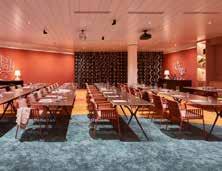
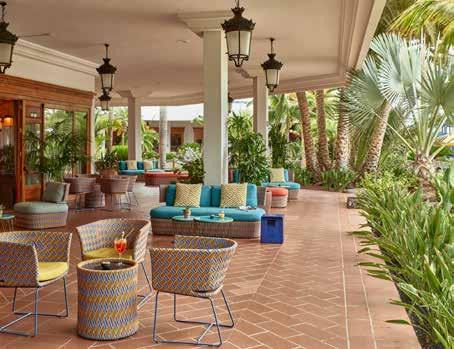
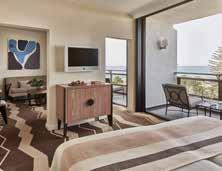
5. Balance & Wellbeing A relaxed environment enhances creativity and focus. Our hotels offer wellness options like spas, pools, and direct beach access, giving guests space to recharge between business sessions. Spotlight: Seaside Los Jameos – Currently undergoing an exciting transformation, Seaside Los Jameos is set to reopen as a five-star property, introducing stateof-the-art conference facilities, refined design and elegant new spaces tailored for business travelers. Located just steps from the beach in Lanzarote, this upgraded resort will offer the perfect blend of modern functionality and Canarian charm.
Our MICE-friendly properties in the Canary Islands:
• Grand Hotel Residencia*****GL –member of The Leading Hotels of the World
• Palm Beach***** – member of Design Hotels™
• Seaside Sandy Beach****
• Seaside Los Jameos Playa***** (reopening soon)

Q: Could you tell me a bit about yourself?
A: I’m originally from France and have worked in the travel, tourism, and MICE industry since I left school—so about 18 years now. Today I and my partner Quentin work out of France but we have three offices in the field: Edinburgh led by Charlotte with four people; Dublin led by François with three people; and London led by another Quentin for England and London specifically.
Q: What are then the main differences between Belgian and Dutch clients?
A: The Dutch are more straightforward— which I appreciate. They’re very direct, whereas in destinations like Ireland or Scotland, people tend to circle around topics. With Dutch clients, you don’t waste time. Budget-wise, Belgians focus on service quality and are less strict about small price differences, while Dutch clients scrutinize every euro from the start. Amsterdam Airport is a huge advantage for us—daily flights to Edinburgh, Glasgow, London, and Dublin—while from Brussels there’s the Eurostar, just 2h15 to London.
Q: You cover England, Ireland, and Scotland. Which cities or regions are your top sellers?

A: In Ireland, Dublin and the Wicklow Mountains are top. We like combining city and landscape—Dublin for nightlife, Wicklow for nature. The west coast is also growing fast: Shannon Airport gives access to Connemara and Galway. For longer stays, we combine Dublin–Galway, which is three hours by train. I’m also promoting Belfast—it’s authentic, easy to combine with Dublin by train or bus. In Scotland, Edinburgh is a definite must— every group wants to visit. We also push the Highlands for nature, and Glasgow,
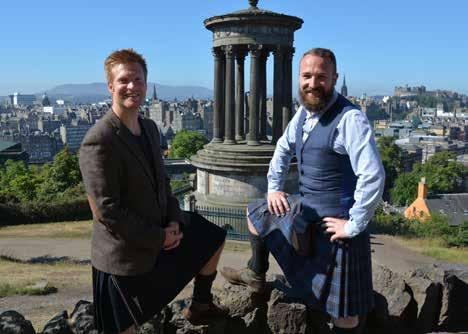
which is near Loch Lomond—perfect for combinations like Glasgow–Highlands–Edinburgh. The Borders region, south of Edinburgh, offers great rates and allows combinations with England. Whisky tours in Speyside, arriving via Inverness or Aberdeen, are also popular. In England, we often combine London with nearby regions like Oxford, Liverpool, or Manchester, and even the coast. London is versatile, but there’s a lot beyond it, including wine regions only an hour and a half away.
Q: Have you noticed changes in what clients want?
A: Yes—trips are longer now, often four nights or more. People want authentic experiences, to meet locals, and understand culture. Corporate groups want meaning—programs aligned with company values, like teamwork through rugby. Visiting museums is out; interaction is in.
Q: Rugby is clearly a passion of yours. How do you integrate it?
A: Absolutely. Every year we host large
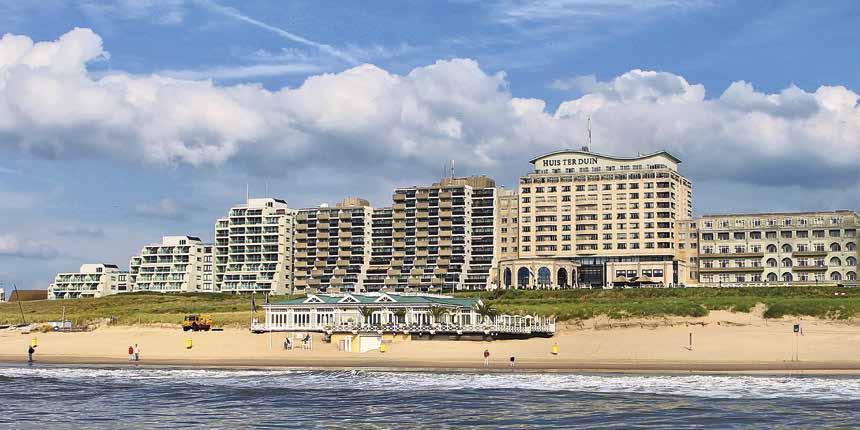
E N J O Y HO LL AND’S F IN E S T B E AC H
The majestic Grand Hotel Huis ter Duin has been the highest point on the Dune in Noordwijk for over 135 years, directly located on the beach with a stunning view of the Nor th Sea. The 254 rooms, including various suites and penthouses, combined with the 19 multifunctional meeting rooms, provide the per fect combination for a successful event!
The majestic Grand Hotel Huis ter Duin has been the highest point on the Dune in Noordwijk for over 135 years, directly located on the beach with a stunning view of the Nor th Sea. The 254 rooms, including various suites and penthouses, combined with the 19 multifunctional meeting rooms, provide the per fect combination for a successful event!
The majestic Grand Hotel Huis ter Duin has been the highest point on the Dune in Noordwijk for over 135 years, directly located on the beach with a stunning view of the Nor th Sea The 254 rooms, including various suites and penthouses, combined with the 19 multifunctional meeting rooms, provide the per fect combination for a successful event!
A unique family owned and operated hotel; 254 rooms, including 20 suites and 4 penthouses; 19 multifunctional rooms, all with direct daylight and air conditioning. The largest room has a ceiling height of 5.7 meters and can accommodate up to 500 people in cabaret style with ‘back projection’;
A unique family owned and operated hotel; 254 rooms, including 20 suites and 4 penthouses; 19 multifunctional rooms, all with direct daylight and air conditioning. The largest room has a ceiling height of 5.7 meters and can accommodate up to 500 people in cabaret style with ‘back projection’;
A unique family owned and operated hotel; 254 rooms, including 20 suites and 4 penthouses; 19 multifunctional rooms, all with direct daylight and air conditioning. The largest room has a ceiling height of 5.7 meters and can accommodate up to 500 people in cabaret style with ‘back projection’;
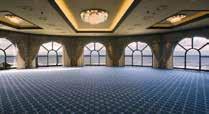
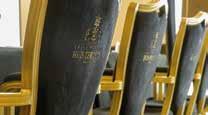
Directly located on the beach, making it perfect for incentives and social activities;
Directly located on the beach, making it perfect for incentives and social activities;
Directly located on the beach, making it perfect for incentives and social activities; Three-time winner of the M&IT Award for ‘Best Overseas Hotel’; Only 20 minutes from Schiphol Airport and 30 minutes from Amsterdam and The Hague; Free WIFI in the rooms, meeting rooms, and public areas.
Three-time winner of the M&IT Award for ‘Best Overseas Hotel’; Only 20 minutes from Schiphol Airport and 30 minutes from Amsterdam and The Hague; Free WIFI in the rooms, meeting rooms, and public areas.
Three-time winner of the M&IT Award for ‘Best Overseas Hotel’; Only 20 minutes from Schiphol Airport and 30 minutes from Amsterdam and The Hague; Free WIFI in the rooms, meeting rooms, and public areas.
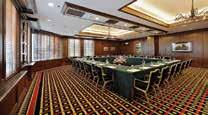
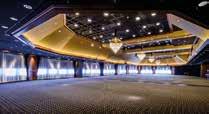

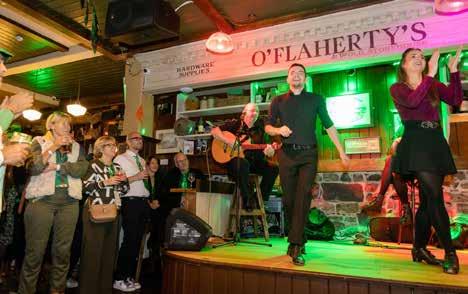
groups for Six Nations matches—next year Scotland vs. France, we expect over 1,000 guests. We also organize smaller rugby experiences—training sessions with local clubs, followed by a barbecue and beers. It’s affordable but unforgettable.
Q: How do you differentiate Inspire DMC from other DMCs in such popular cities?
A: By creating our own experiences. In Scotland, for example, we organize Fife and St. Andrews day programs—visiting farms and producers, ending with a golf lesson. In Ireland, we develop MICE programs in regions like Galway and the Ring of Kerry, including old car rallies for 50 people. In England, we explore wine tourism near London. We focus on authenticity, creativity, and lesserknown areas.

Q: London has a reputation for being expensive. Where in your region do clients get the best value?
A: London can be pricey, but there are workarounds. The Eurostar is cheaper than flying, and the pound’s current rate helps. Staying in certain neighborhoods or secondary cities like Manchester or Liverpool lowers costs. Seasonality also matters—winter months offer great rates. Glasgow, Cork, and Liverpool all provide strong value.
Q: Does Brexit affect your business?
A: Slightly. There’s now a small £20 e-visa for England and Scotland, valid for a year. It’s quick—takes minutes online—so it’s manageable and can even be done by the agency for the client. It hasn’t impacted bookings much. In fact, Brexit has created curiosity—clients want to learn about its effects, so we sometimes arrange talks with economists or local politicians.
Q: Is demand from the Benelux increasing?
A: Absolutely, 100%. MICE groups now prefer destinations within three to four hours’ travel. After doing southern Europe and Morocco, many are turning north again—to Ireland and Scotland. People are rediscovering them. Scotland in particular feels culturally “far,” but it’s only an hour and a half from Amsterdam, which surprises many. Education and communication with Iris are key in promoting that destination. London is constantly evolving, with new venues, activities, and restaurants, which is great, but it also means we must be out in the city regularly, not just behind a computer.
Q: How would you describe the cultural differences between Ireland, Scotland, and England?
A: Each has a strong identity. Scotland stands out for heritage, landscapes,
bagpipes, whisky, and authenticity. Ireland—especially Dublin—has a youthful energy and strong global business links with companies like Facebook, LinkedIn, and Twitter, which we can visit or meet. Dublin is more party-oriented, while Edinburgh feels a bit more VIP. If you say you have salespeople, mostly men around 35, for three nights of party, I’d say Dublin. If you have 25 couples who are customers and you want free time and tailored activities for both men and women, I’d say fivestar, more curated Edinburgh. London is cosmopolitan and versatile; you can do almost anything there, including fully international dining for four nights without touching classical English culture. If avoiding flights is crucial, London is ideal thanks to the train: two hours from Brussels and two hours fifty from Amsterdam.
Q: Any final thoughts?
A: In Dublin and Edinburgh, most programs are walkable—around 80% in Dublin and 90% in Edinburgh. That saves time, adds comfort, and supports sustainability. London is larger, so we use black cabs, river cruises, or the Tube rather than buses when possible. Ultimately, MICE is about meaningful travel. Even if most of a trip is leisure, I believe every program should include a professional moment—a talk, company visit, or cultural insight. For instance, we once had a group travel from London to Edinburgh by train with a live economist explaining Brexit’s impact. They returned home entertained and informed—that’s what makes it memorable.
Q: What group sizes can you handle?
A: From 10-person incentives to 500-person conferences. We’ve even hired Murrayfield Stadium for a threeday event. The key is creativity—working with what the destination offers.
Q: When is a trip successful for you?
A: Success is when a client books the same destination again next year because they delivered a winning experience with our help. That’s when we know we did our job right.

Malta has long been a trusted destination for Dutch conference and incentive planners. Today, the Maltese Islands invite you to rediscover a destination that has evolved offering a more refined proposition than ever before.
Just three hours from Amsterdam, Malta combines excellent accessibility with year-round sunshine and a compelling blend of culture, innovation, and hospitality. Its 7,000-year heritage now inspires immersive experiences that elevate corporate events. From ancient temples to baroque cityscapes and UNESCO-listed Valletta, Malta transforms history into a vibrant stage for creativity and connection.
Accessibility from the Netherlands continues to improve with the recent announcement from KM Malta Airlines that flight frequency between Malta and Amsterdam from November through March will increase with the airline operating an extra Friday morning flight throughout winter. This results in daily service until the end of January, six weekly flights in February, and five in March offering planners’ greater flexibility for event scheduling.
Malta aligns seamlessly with what Dutch planners value most: ease of access, efficient logistics, and minimal travel time for delegates. The islands offer state-of-theart conference infrastructure alongside newly launched venues that elevate every gathering. From the contemporary elegance of MICAS, where art meets innovation, to the regal grandeur of the Grandmaster’s Palace, and the tranquil charm of Malta’s historic gardens, each space invites planners to craft events steeped in heritage. With customisable programmes ranging from private yacht charters to immersive cultural encounters, Malta empowers planners to design incentive journeys that spark connection, motivation, and lasting memories. Strategy sessions overlooking the sea, or team-building adventures along dramatic coastal cliffs – who said that things must happen indoors?
Sustainability is also being introduced into the business culture. Small but meaningful practices are now embedded in the operations of local DMCs and woven into the broader tourism strategy, ensuring that incentive experiences not only inspire but also align with responsible travel values. Eco-certified hotels, locally sourced catering, and energy-efficient venues reflect a commitment to responsible travel. Combined with value for money and hands-on local support, Malta offers a destination that balances professionalism with purpose.
Nevertheless, the most meaningful experiences come from being with the locals, sharing stories and tasting traditions. Whether it’s a hands-on cooking session, a stroll through a farmers’ market, or a sunset dinner hosted in a centuries-old fort, these moments offer a true sense of place. Malta’s culinary scene also includes a number of Michelin-starred restaurants run by local chefs that celebrate Mediterranean flavours with heart. Wine tastings in ancient cellars and meals in historic gardens deepen the connection, turning every journey into a celebration of culture and community.
Supporting planners every step of the way is VisitMalta Incentives & Meetings (VMIM) a dedicated team within the Malta Tourism Authority offering tailored solutions, introductions to trusted suppliers including DMCs, and creative itinerary ideas.
Explore more at https://vmim.visitmalta.com or contact us on infonl@aviareps.com or +31 20 52 00 280

In a city constantly in motion, where cranes etch the horizon and architecture feels almost like a religion, nhow Rotterdam is a hotel that perfectly captures that relentless energy. We spent one night here, perched high above the Maas River, and discovered a place where cutting-edge design, genuine hospitality, and urban flair converge. The “nhow” hotels, part of the NH Hotel Group, are far from typical chain locations. They feel like creative hubs—places where the city is the backdrop and the hotel is the stage. Each nhow has its own theme; in Rotterdam, the focus is on architecture and progress.
The hotel features 274 rooms spread across 23 floors. We stayed in a Premium Room with Skyline View high above the city. The moment the door opened, a sense of silence and well-being washed over us. The floorto-ceiling windows framed the Erasmus Bridge and Rotterdam’s imposing skyline—a view that seemed to be designed by Koolhaas himself. A handwritten welcome note added a personal and complete touch to the experience.
Inside, the design is sleek yet comfortable. A kingsize bed with perfect linens, a large workspace, a comfortable armchair, and an open-concept bathroom with a rain shower. The lighting is warm, the colors soft. We drew the curtains wide open (and they stayed that way), brewed a fresh espresso, and let the city sink in. Rotterdam breathes deep into the night, and we watched, breathless, alongside it.
For dinner, we dined at the hotel’s Gastrobar, Elvy, located on the seventh floor and boasting the same spectacular views. The atmosphere was relaxed. The servers offered excellent recommendations for both food and cocktails, striking the perfect balance between attentiveness and discretion—it felt personal, once again. The menu is concise, featuring small, seasonal dishes with an international twist. Around us, guests conversed in
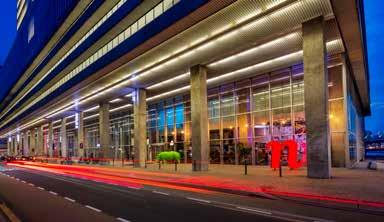
various languages, while outside, the city lights reflected brilliantly in the Maas. This was the exact urban, elegant, yet intimate moment one desires when traveling.
The breakfast the next morning far exceeded expectations. Everything was abundant: fresh fruit, smoothies, hot dishes, and bread from local bakeries. The attention to allergies and dietary needs was particularly memorable, with everything clearly labeled and tastefully presented. Sipping a ginger-mint smoothie as the morning sun glided across the Maas, we realized a better start to the day was almost unimaginable.
The service at nhow is exactly what the modern traveler wants: efficient, but with genuine personality. There are no excessive formalities, just genuine care. When checking out, the receptionist didn’t just ask how we slept, but whether we had managed to catch the skyline at sunrise—those are the details that make the difference.
For longer stays, the hotel offers all expected amenities: a 24-hour fitness center, high-speed Wi-Fi, comfortable workspaces, and various lounges that offer an escape from the urban bustle. Everything exudes a sense of calm design.

Austrian Airlines, Brussels Airlines, Eurowings, Lufthansa, SWISS, Air Dolomiti, Discover Airlines and Edelweiss – these are the Lufthansa Group airlines.
For instance: flying from Amsterdam via our hubs Frankfurt, Munich, Vienna and Zurich to more than 270 destinations around the world.
And, not forgetting those living or working close to the border of Belgium and Germany, plenty of connections from either Brussels or Dusseldorf are offered.
With the airlines of the Lufthansa Group, passengers can make the most of a wide selection and lots of combination opportunities. Coordinated timetables and combinable fares ensure the greatest degree of flexibility when planning flights.
Whether for business or pleasure – the Lufthansa Group airlines fly passengers flexibly around the world.



Travelers from Frankfurt can enjoy the latest Lufthansa Allegris cabin and look forward to exceptional comfort in all travel classes. Lufthansa is using its new ‘Dreamliners’ with state-of-theart cabins for this purpose. The first Allegris flight from Frankfurt to Toronto, Canada recently took off. Starting with the winter flight schedule, Rio de Janeiro, Bogotá, Hyderabad, and starting in December, Austin (Texas) will also be served from Frankfurt with Allegris. Allegris has been available on the Airbus A350-900 from Munich since May 2024 and is proving extremely popular. More than half a million passengers in all classes have already experienced the new seating concept – and well over 90 percent were enthusiastic about the new cabin. With Allegris, passengers can expect an exclusive and personalized experience across all classes, with innovative seating concepts, highquality materials and state-of-theart technology. With the delivery of additional Boeing 787 aircraft in the coming weeks, Lufthansa will announce further long-haul destinations for Allegris.
Oman Air will continue its direct flight between Muscat and Amsterdam this winter season. The Oneworld member announced this. Just as in the current summer season, the airline will fly direct four times a week.
Oman has been in the spotlight recently, thanks in part to the Sultan’s visit to the Netherlands and the ANVR congress, which benefited the travel industry. The destination recently announced a partnership with TUI. Oman will fly the route with a Boeing 787 in both Economy and Business Class.

EasyJet is launching a new route from Schiphol to Thessaloniki. With this Greek destination, EasyJet offers more than 50 destinations from Schiphol.
Flights from Amsterdam to Northern Greece will begin on March 29 of next year. There are two flights per week. Thessaloniki is located in northern Greece, on the Aegean Sea. The vibrant city has a pleasant Mediterranean climate. The mild springs and warm, sunny summers make this city an ideal destination for a trip during the spring and summer season, says the airline. Thessaloniki has a rich history dating back to antiquity, with a mix of Byzantine churches, Roman monuments, Ottoman architecture, and modern museums.
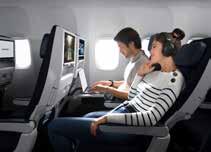
COMPLIMENTARY WIFI NOW AVAILABLE ON BOARD AIR FRANCE
Air France’s in-flight wifi service is now operational. The company is set to equip the fifth aircraft in its fleet with high-speed wifi, allowing passengers to enjoy a free, quality internet connection that is stable, fast, and secure. With this innovation, Air France is the first major European airline to offer such a service on board. It plans to offer this service on 30% of its fleet by the end of the year and throughout its fleet by the end of 2026. This new service is completely free in all travel cabins and is easily accessible by logging into your Flying Blue account. Air France is progressively rolling out this offer across the entire fleet, including, for the first time, its regional aircraft.
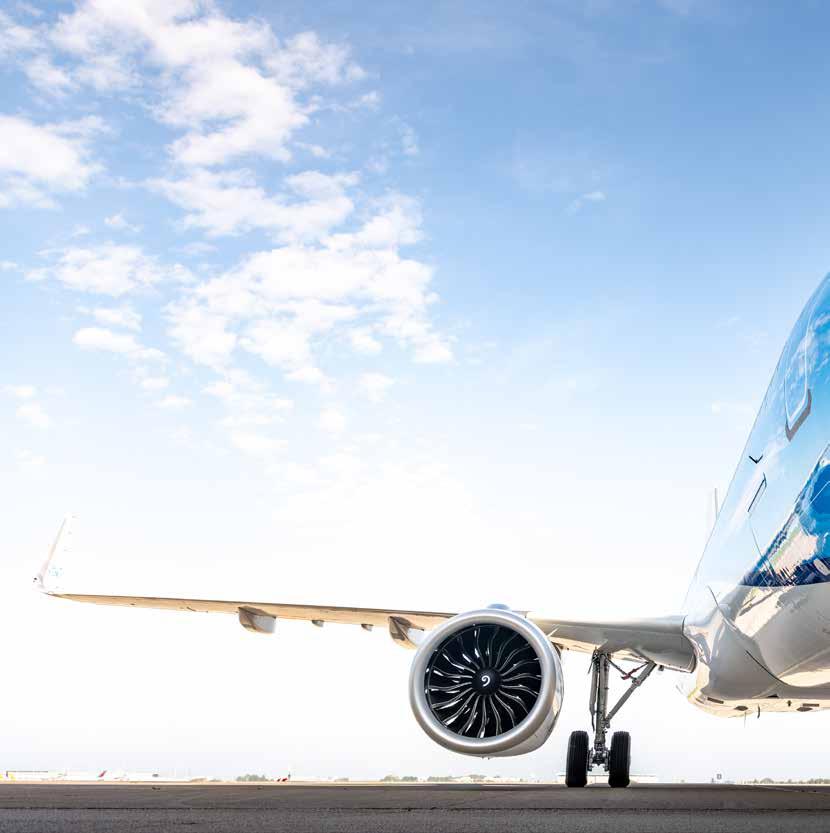
There were fireworks at the unveiling of House 106, the famed Businessclass give away. But not in the usual festive context. A stern KLM CEO Marjan Rintel had a firm speech on todays rather adverse climate in which KLM has to operate, with three strong appeals for the powers that are, and to be.
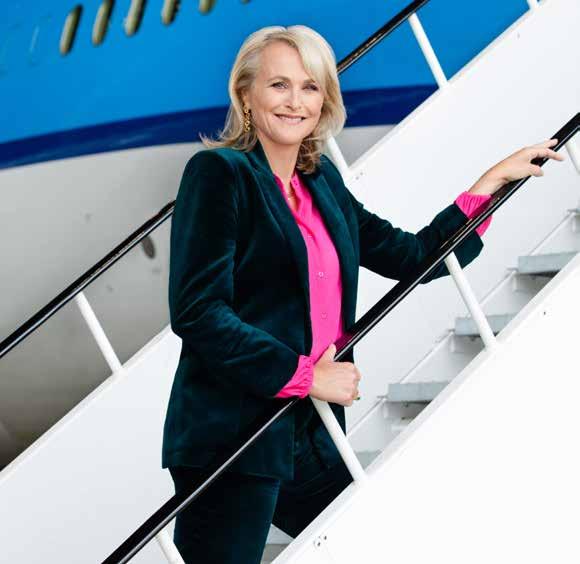
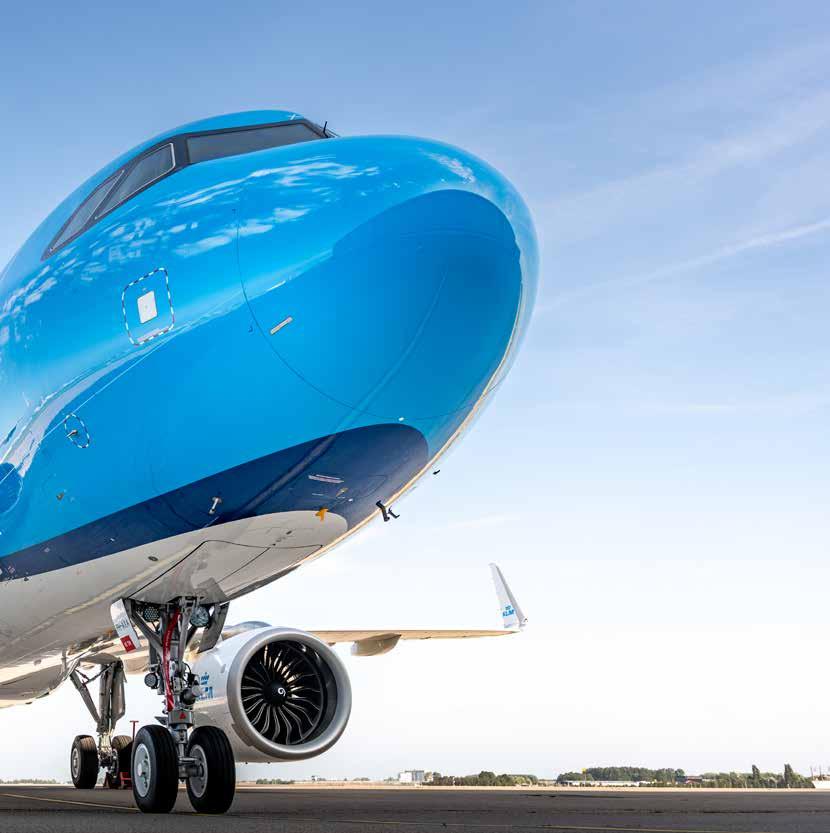
We publish parts of the speech litteraly in order to prevent any misconceptions. As spoken by Marjan Rintel in The Pieterskerk in Leiden: ‘The values of freedom, connection, and resilience also resonate with us at KLM: travel is a wonderful example of freedom. The personal freedom to go where you want—to discover the world, meet family, do business, or experience other cultures. This is something we take for granted today in the Netherlands. But with all the current ideas about flying, it could soon become a thing of the past.
That’s why it’s important to recognize just how vital this infrastructure is for our independence. And even more broadly: the freedom and connection created between people, countries, and cultures. We have proudly contributed to this for 106 years! This brings great benefits to our country, and especially in times of global tension, its importance is underscored repeatedly. We can only maintain this with true resilience, the ability to stand firm and keep innovating, despite turbulence or setbacks.’
‘Turbulence in the world around us inevitably impacts KLM itself; at times, there is even significant turbulence within our own company. Only resilience can bring you to 106 years. Resilience is essential in a rapidly changing world, like aviation. Within ten minutes, you’re out of the Netherlands, and we have to deal with all continents and fierce competition. Geopolitical circumstances have always affected us as an international airline. Conflicts around the world have, first
and foremost, terrible consequences for those directly involved, also for the routes we fly every day. Economic sanctions between countries are immediately felt and noticeable in our operations.’
‘The bond between the Netherlands, KLM, and the United States has existed for many years and has always been of great value to our country. It remains vibrant and crucial for the networks of KLM, Air France, and Delta. Long ago, it was the sea that first connected our countries; now, centuries later, it is the air that brings us even closer together. That sentence beautifully sums up what we do: shrinking distances and expanding opportunities. We demonstrate this by introducing new destinations like San Diego and Portland.’
‘Together with our partners in the transatlantic Joint Venture, we provide a strong backbone for trade, research, culture, and tourism that benefits the economies on both sides of the ocean. A strong, major hub like Schiphol plays a key role in this—it’s not a luxury for
the Netherlands, but a necessary condition. It ensures that businesses, research institutions, and cultural organizations can thrive—in Leiden, in the province of South Holland, and throughout the Netherlands.’
‘In this election period, I want to stress that this network is not an end in itself, but is crucial for economic activity, strengthening both our prosperity and our resilience! Let me be clear: we desperately need new housing, but we also desperately need a well-connected country. Creating a conflict between flying and housing is a false dilemma. It’s not either-or. It’s both.
Because everything we tear down now will never return. Just look at the auto industry or the debates in the steel industry—how many companies are leaving the Netherlands?
74% of Dutch travelers are considering departing more often from Belgium or Germany if ticket prices rise further due to Dutch aviation taxes. The proposed further increase in aviation taxes by
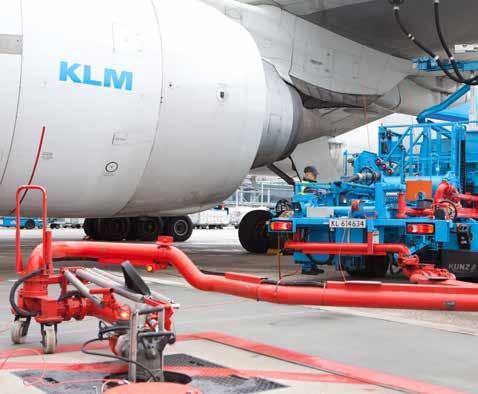
this cabinet, starting in 2027, will make the Netherlands the most expensive country in the European Union for all distances. As a result, even more Dutch people will drive to foreign airports to fly.
This does not help the climate. In fact, it undermines our ability to keep investing in cleaner and quieter flight. The Netherlands is pricing itself out of the market. This puts our network under pressure and threatens our country’s connectivity with the rest of the world.’
Therefore, we make three appeals to our policymakers: Protect Schiphol as critical infrastructure, especially in these uncertain geopolitical times. • Keep flying affordable for all Dutch citizens and don’t price ourselves out of the market.• Invest together in future-proof aviation and cleaner flying, such as the production and affordability of alternative fuels— SAF.
We must prevent producers from closing their biofuel plants in the Netherlands and instead become leaders in SAF. We have everything we need in the Netherlands to make this happen. But good policy and an actively supportive government are crucial. Because now, not a single cent of the proceeds from taxes—soon to be 1.5 billion euros per year for the sector— goes toward making aviation more sustainable. Just as the government helps to scale up wind and solar energy or supports the electrification of vehicles, it must also do more to make SAF available and affordable in the Netherlands. And in a world that is becoming ever more turbulent, we need a strong Europe—especially to create a fair playing field internationally. Our ambition is clear: we are taking responsibility with investments of 7 billion euros in ever cleaner, quieter, and more efficient next-generation aircrafts. With investments in alternative
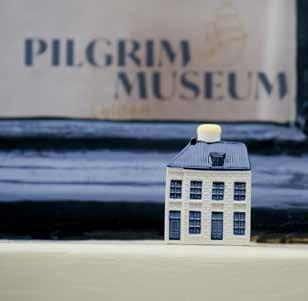
KLM marked its 106th anniversary by unveiling a new Delft Blue house, with a festive wink to partner Delta Airlines. The honor went to Villa Rameau, located next to the Pieterskerk in Leiden. The Pilgrims stayed in this city for twelve years before they set sail on the Mayflower to America in 1620. The Pilgrims’ journey began a lasting connection across the Atlantic, one that KLM has proudly continued for 106 years. As the world’s oldest airline still operating under its original name, KLM has played a key role in linking the Netherlands and Europe with the United States. As part of the Air France-KLM Group and in Joint Venture with Delta Air Lines, KLM carries millions of passengers each year between Europe and the US, serving a network of fifteen US destinations. These connections support the economies and prosperity on both sides of the ocean. Rintel: ‘With the unveiling of Villa Rameau as our 106th Delft Blue house, we’re not only celebrating our birthday, but also the importance of connection and resilience. These values are reflected in the story of the house and the Pilgrims, and they’re also at the heart of KLM. For 106 years, we’ve been building global connections. Especially in challenging times, this house reminds us how vital it is to stay connected. It’s a small symbol with a big story about how we keep innovating and shaping the future of aviation.’
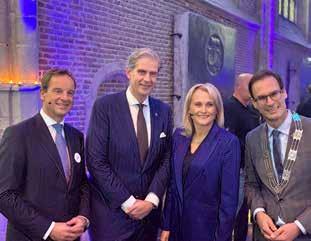
fuels, innovation, and numerous other measures to reduce our ecological footprint and eliminate waste. This makes consistent policy and regional cooperation even more important. Right here in South Holland, a region renowned worldwide for its competitiveness, we can prove that it’s possible: a strong economy and cleaner aviation. Back to the house we are unveiling today, and back to where I began this speech: we are not standing here by chance in the Pieterskerk in Leiden. Leaning against this monumental church is Villa Rameau, which, through the stories of the Rameau family and the Pilgrims, shows how important connection, freedom, resilience, and perseverance are. Let’s not forget this—especially now, when it is needed more than ever.
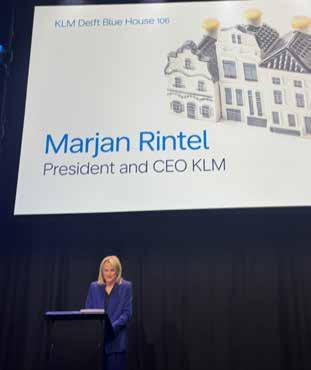

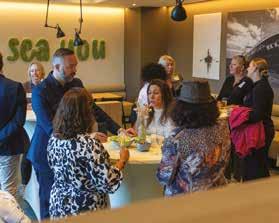

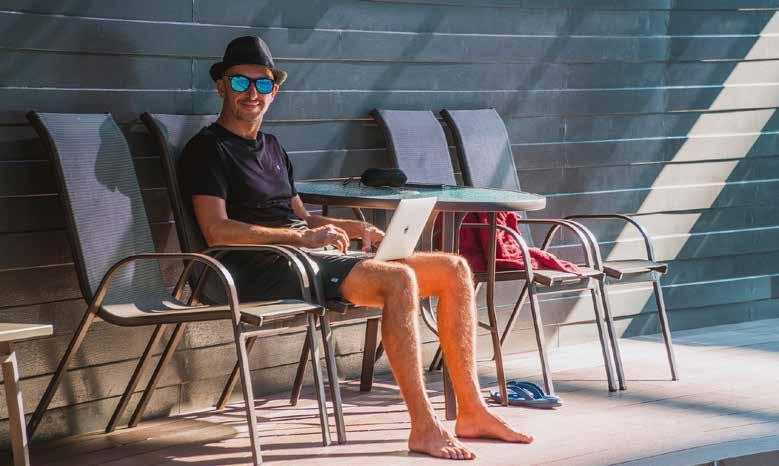
The boundaries between business and leisure travel have blurred more than ever before. Since the global shift in work-life dynamics after 2020, professionals have increasingly sought to combine work trips with leisure time—a phenomenon known as bleisure travel. This trend, highlighted in the 2025 World Trends Report by IBTM, stems from the growing flexibility in modern work and the desire for deeper engagement with destinations during business trips. For the MICE industry, this represents not just a shift in traveller behaviour but a major opportunity to enhance event value and engagement.
Bleisure travel—extending a business trip for relaxation, exploration or family time—has gained significant traction as hybrid and remote work allow professionals to stay connected from anywhere. The numbers back it up: according to the IHG Business Traveller Trends Report (2023), 42% of UK travellers extended their work trips to include leisure experiences. Analysts expect the global bleisure market to expand by over 500% by 2033 (source: Future Market Insights, 2024), underscoring that the desire to blend business and leisure is here to stay.
For MICE organisers, the implications are clear. When delegates have the chance to unwind and explore before or after an event, they arrive more relaxed, engaged, and receptive. This leads to higher participation, improved networking, and more meaningful outcomes. Moreover, longer stays foster emotional ties to destinations—turning
first-time attendees into returning visitors—and encourage sustainable travel habits by maximising one trip rather than multiple flights (source: Global Business Travel Association, 2024).
Local economies stand to benefit as well. By integrating local experiences, event planners can forge partnerships with tourism boards, hotels, restaurants, and cultural venues, creating a richer delegate experience while boosting regional tourism (source: UNWTO MICE Outlook 2024).
To harness this momentum, organisers are urged to rethink their strategies. Promoting the host destination alongside the event itself can make gatherings more appealing. Centrally located venues, partnerships with local businesses, and curated itineraries tailored to delegates’ interests can transform a conference or exhibition into an immersive experience. Offering insider recommendations or even organising optional leisure activities reinforces the destination’s value while supporting community engagement.
Bleisure travel is no longer a fringe perk—it is a defining feature of how global professionals travel in 2025. For the MICE industry, it offers the chance to deliver exceptional experiences that go beyond the boardroom, merging productivity with personal enrichment. Those who adapt now will not only elevate attendee satisfaction but also secure their place at the forefront of the industry’s evolution.

We welcome back our SUMMIT Expert Panel: experienced MICE professionals who share their answers to questions from the editor. Do you have a question yourself? Mail us!
Our two questions:
1. Are you going to IBTM World? If yes, what do you hope to get out of it, what is its value? If not, why not?
2. How could IBTM be improved?

1. During an already packed event season from September to December, it’s always a challenge to balance our schedules between inspirational trips and ongoing projects. Although we usually have a team member attend IBTM World, this year we didn’t see sufficient added value. While it remains a great event for networking and discovering new destinations, the contacts there don’t always align with the boutique-style agencies we seek.
2. I believe it would be beneficial if IBTM considered a different approach to scheduling appointments. As a buyer, it would be more valuable to arrange meetings that are truly relevant and add clear value to our business. I also prefer exploring the exhibition floor and engaging directly with suppliers on-site — which, in an ideal scenario, would be a more suitable format for me.

1. We participate annually in both IBTM World in Barcelona and IMEX Frankfurt to meet our international partners and gain inspiration within the MICE sector. Both trade shows offer valuable opportunities for knowledge sharing and networking. In recent years, however, our preference has shifted towards IMEX, as IBTM has imposed increasingly strict participation requirements, such as mandatory attendance and a tightly scheduled appointment program. As a result, there is less room for spontaneous meetings and discovering new ideas — precisely those moments that are essential for inspiration, innovation, and sustainable relationships in our industry.
2. IBTM World remains a leading trade show, but the current setup with mandatory full days and tightly planned appointments leaves little room for spontaneous encounters and inspiration. More flexibility — allowing participants to decide how many days to attend and how many meetings to schedule — would enhance the quality of interactions. Differentiating between new and experienced participants could also contribute to a more tailored trade fair experience. At the same time, it’s understandable that the organization wants to fill show days with valuable appointments; a golden balance between structure and flexibility would benefit both efficiency and inspiration.


1. For us, a MICE fam trip is truly successful when it offers a well-balanced showcase of services — ranging from hotels and restaurants to venues and activities. Too often, the focus lies almost exclusively on site inspections of hotels and venues. It is also important for us to have a clear overview of the program in advance. Ideally, the program includes one or two weekend days, ensuring minimal time is lost at the office. The composition of the group, however, is something we value highly. We notice more fam trips where traditional travel agents are also invited, which often shifts the focus towards different types of hotels, venues, and activities. We prefer that these target audiences are not mixed. On the other hand, a diverse mix of MICE agents from different countries is very valuable — it allows for fresh perspectives without directly sparring with local competitors.
2. At FAME, we still see strong demand for long-haul destinations across Asia, Africa, and Latin America. Over the past few years this segment has grown slightly, but it now seems to have levelled off again. Destinations that are technically “long-haul” but located just outside Europe, however, are gaining momentum. Think of Morocco, Senegal, or Egypt. These destinations bring an exotic flair to any incentive while often being more budget-friendly than many intercontinental trips.

1. No, I’m not going. For me, the time it takes usually doesn’t outweigh what it delivers. A lot of the same things, quite monotonous.
2. It’s been several years since I last attended, so I don’t have a clear answer to that.

1. Yes, I’m attending IBTM World. For me, it’s an opportunity to get inspired — exploring new destinations, identifying emerging industry trends, and learning about the latest developments in event technology. It’s also an ideal moment to reconnect with peers, exchange ideas, and build meaningful professional relationships. Trade shows like IBTM are valuable not only for discovering innovations but also for gaining a sense of where our industry is heading and how we can continue to add value to our clients and communities.
2. The industry has evolved — and so should our trade shows. In my opinion, the traditional hosted-buyer model no longer delivers the depth and relevance our sector needs. It often results in superficial, pre-arranged meetings where supply and demand are misaligned, wasting valuable time and limiting genuine connection. IBTM could add more value by focusing on curated, contentdriven encounters instead of transactional matchmaking. Smaller themed communities — around topics such as sustainability, experience design, or technology — would create space for authentic dialogue and real collaboration.
In a world that values purpose and authenticity, the future of trade shows lies in inspiring exchange, not forced appointments. Exhibitors who lead with substance and expertise will always make a stronger impact. Events like IBTM could focus more on content-driven encounters, where knowledge exchange, innovation, and collaboration take center stage. Imagine smaller, themed communities within the show — focused on sustainability, experience design, or technology — where professionals can meet organically and share real challenges and ideas.
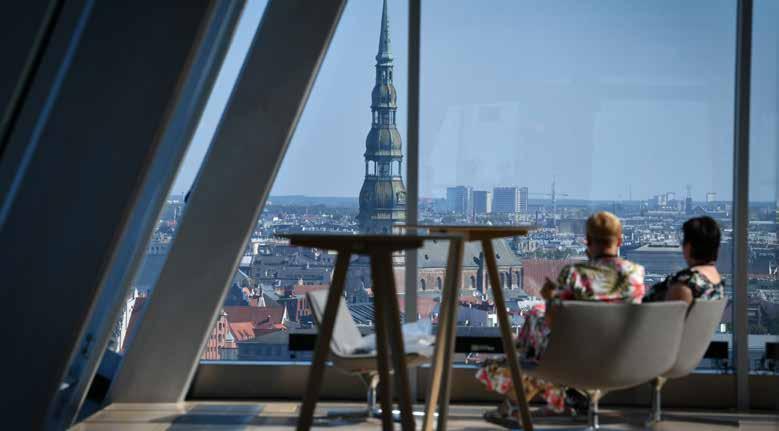
Riga, the capital of Latvia, offers a dynamic mix of event venues that go far beyond the conventional. From re-purposed cultural landmarks to modern creative hubs, the city provides spaces that are not only functional but also rich in character and atmosphere. These venues are ideal for organizers seeking to create memorable, engaging, and purpose-driven experiences.
In the heart of Riga, historic markets, museums, and contemporary event spaces offer a refreshing alternative to standard conference halls. Many of these locations have been thoughtfully revitalized to support a wide range of formats—from corporate meetings and exhibitions to concerts and community gatherings. Their architectural uniqueness and cultural significance add depth and authenticity to any event, while modern infrastructure ensures comfort and accessibility.
Creative hubs throughout the city cater to flexible event needs, supporting everything from largescale conferences to intimate workshops. These spaces often feature industrial-chic interiors, advanced AV setups, and customizable layouts, making them suitable for photo shoots, product launch-

es, and hybrid events. Their proximity to the city centre and transport links adds convenience without compromising on style.
Beyond the city, Latvia’s countryside offers a selection of manor houses that serve as exceptional venues for retreats, incentive programs, and exclusive gatherings. These estates, often surrounded by nature and steeped in history, provide a serene backdrop for focused, high-impact events. Restored with care, they blend historical elegance with modern amenities, offering tailored services, gourmet catering, and luxurious accommodations.
Manor venues typically include spacious halls, salons, and outdoor areas that can be adapted for seminars, gala dinners, or wellness activities. Their secluded locations ensure privacy and immersion, fostering creativity and meaningful interaction among participants. Whether hosting a strategic offsite or a celebratory occasion, these venues offer a distinctive atmosphere that elevates the experience.
Together, Riga’s urban spaces and Latvia’s rural estates showcase the country’s capacity to host events in settings that inspire and engage. Whether in a vibrant market, a sleek creative hub, or a tranquil manor, these venues reflect a commitment to quality, innovation, and cultural richness—making them ideal for those seeking something truly out of the ordinary.
Editor-in-Chief Tijn Kramer talks with Laura Koreman, Managing Director of Uniglobe Travel Netherlands, about shifts in the corporate travel market, the role of technology, and the company’s focus on the upper SME segment.
Tijn Kramer (TK): You’ve been managing director for a relatively short time but you’ve been with Uniglobe for quite a while.
LK: I’ve been here for 23 years. The biggest change is that I now hold final responsibility. Previously, I worked more behind the scenes. Now I’m in a more visible role and lead in close collaboration with the organization. We’re not a traditional franchise setup — the entrepreneurs are co-owners of my office. I continue to serve as the operational hub — that hasn’t changed — but now we share responsibility. Across all pillars at our head office — technology, marketing, procurement, and other key areas — I work alongside the entrepreneurs. They have deeper insight into our operations and customer needs, and there’s stronger commitment because they’re involved in the day-to-day business.
TK: Can you briefly outline the company?
LK: Sure. We have ten offices in the Netherlands, divided over three official Uniglobe licenses — actually four. Last year, Uniglobe Westland acquired Holcar Travel, a TMC who was based in Amsterdam’s Zuidas district. We have Alliance Travel with five offices, Westland with two, and Two Travel with three. Altogether, that’s about 125 to 130 FTEs.
As head office, we continue to focus on the same pillars we have for years: joint procurement of travel products, but also suppliers such as GDS

and technology. And that’s where the link with tech becomes essential. You could say that being a travel company today increasingly means being a technology company. I work closely with the local offices — they’re our eyes and ears in the market. They talk to clients and know their needs, while I focus on the broader market perspective. That combination allows us to move forward together.
TK: How are things going — both for the market and for Uniglobe?
LK: Very well. Although honestly, competition has become more aggressive. You always have to rely on your own strengths, but consolidation is intensifying. Customer demand is changing. The storytelling toward potential new clients is completely different from five years ago — certainly pre-COVID. We constantly ask: what are the changing customer needs, and how do we adapt our proposition? The market is evolving rapidly. More players are entering with a strong online focus, which again raises the question: are
we travel companies or tech companies?
I believe we’re strongest in our hybrid model — offering online services when clients want then but being there offline when things get complex. Especially with today’s geopolitical context, you can’t rely solely on online booking. You need someone at your side when disruption happens.
TK: You mentioned changing customer needs. What else has shifted?
LK: There’s a stronger desire for direct flights, for one. Travelers themselves are increasingly in the driver’s seat. It’s no longer the company dictating travel policy — employees negotiate their own travel conditions as part of their employment package: “If I travel, I want X, Y, or Z.” Employers go along with that because talent is scarce and labor costs are high. To retain people, you have to offer something. We now see travelers
with detailed preferences: not just direct flights, but even aircraft types. Some only want to fly long-haul on a Dreamliner or short-haul on an Airbus A320. Travelers today are much more knowledgeable — part of a generation that manages everything on their phone and knows exactly what’s available.
TK: Does this contribute to better work-life balance and retention?
LK: Definitely. We see more pre- and post-trip stays — arriving a day or two earlier or extending the trip afterward. It’s called bleisure or workation, and it’s increasingly common. I see it as part of an employer’s duty of care — not just safety, but wellbeing. A company that ensures employees are rested before a meeting or have time to unwind afterward practices good people management. We support our clients by offering and organizing these options.

TK: Including MICE and incentives? How’s that market doing? LK: Very well, especially within Europe. Wellbeing plays a role here too. When companies demand a lot from their employees, they’re willing to invest in incentive trips as a reward. That market dipped for a while, but now we’re seeing strong growth — with a full pipeline well into next year. MICE is actually performing better than individual business travel, which is stabilizing.
TK: You’ve traditionally focused on SMEs.
LK: I’d now call it the upper SME segment.
TK: How do you stay ahead in that market? LK: Our strength lies in having entrepreneurs at the table — local business owners who know their markets and networks. That creates trust and gives us an edge, even in tenders.
TK: You’ve brought in Harm Kreulen, former Director of KLM Netherlands, as advisor. What does he add?
LK: I approached him last year because I wanted someone objective — not an entrepreneur — who could challenge ideas and advise on strategy. Harm now serves as a strategic advisor to the entire organization. He knows the market inside out, and his airline background brings valuable perspective. Our work involves collaborating with entrepreneurs across the country, which means navigating a wide range of views. Having someone experienced and pragmatic who can ask, “Does this align with our long-term strategic vision?” is incredibly helpful. We meet regularly to exchange ideas and align on strategic direction.
TK: Technology is perhaps the hot topic. LK: Technology is crucial. We’re looking to implement it where it can relieve our people. For example, when a client submits a request, AI can handle the initial processing. Our staff’s workload is high, partly due to NDC and changes in distribution. It’s a love-hate thing — but we have to embrace it. Some feel it threatens their authority, but I emphasize that technology — AI, automation, robotics — actually enhances their value. It allows our people to focus where they matter most: personalized service and customer care.
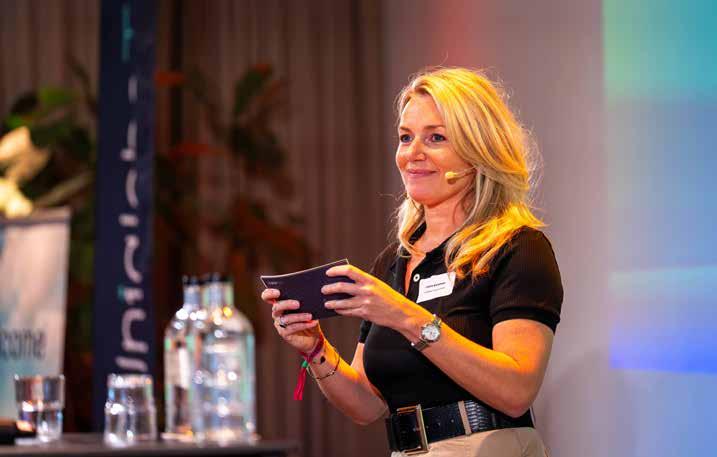
TK: What role will humans play in the TMC of the future? LK: There will always be a human element. The travel agent — someone who truly stands beside the customer — remains highly valued and is something clients are willing to pay for. But that person must bring deep expertise and real added value. Clients are savvy, so knowledge and advisory skills must stay sharp. That’s a key part of our longterm strategy — which brings us back to the power of storytelling.
TK: Sustainability is another big topic. Many talk about it, but few want to pay for it. LK: That’s exactly what we see. The willingness disappears once it hits the wallet. If the government insists on sustainability, then there should also be incentives. When a ticket tax is introduced, where does that money go — into general funds, or reinvested in greener aviation? Unfortunately, it’s the former.
TK: You serve much of the SME sector — the backbone of the Dutch economy. It’s a fragile balance. LK: Exactly. Entrepreneurial Netherlands isn’t waiting for policies that make operating here less attractive. It’s not just small companies — it affects the business climate as a whole. Large firms will leave if the environment becomes unfavorable, and that means fewer passengers at Schiphol. We’re heading down a slippery slope. It sometimes feels like a NIMBY syndrome: “not in my backyard.” People complain about CO₂ and noise, but if we all drive to Düsseldorf or Brussels, the problem just moves elsewhere. I find that incomprehensible.
TK: What are your expectations for the coming years? LK: That depends heavily on geopolitics. I don’t expect stability anytime soon — we’re likely in for a bumpy ride, driven by inflation and rising costs.
TK: Will people keep traveling despite that? LK: Absolutely. The need to meet remains — both professionally and personally. Face-to-face conversations are deeper than online ones. Even if costs rise, curiosity and the desire to connect won’t disappear. In fact, in times of uncertainty, the role of the TMC becomes even more important. Organizations need expert guidance to navigate complex travel landscapes, manage risks, and make smart, strategic choices. The value of a reliable travel partner only grows when the world becomes less predictable.
TK: You’re quite active on LinkedIn — sharing personal stories, thoughtful reflections, and great photos. What motivates you? LK: I began posting last year when I stepped into my new role. It felt like the right moment to strengthen connections with our entrepreneurs. One of our core values is being personal, and I truly believe in living that — not hiding behind digital channels. As the face of the organization, I think it’s important to lead by example and let your personality shine through the stories you tell. That’s what inspired my presence on LinkedIn: to show who we are, not just what we do.

Michelin caused again quite the stir with their ‘new’ hotel keys, the accommodation variation of their even more famous culinary stars. The Guide officially launched its first-ever comprehensive global selection of Michelin Keys at a prestigious ceremony in Paris today, establishing a new international benchmark for hotel excellence. The highest honor was bestowed upon 143 exceptional hotels around the world. This distinction recognizes properties that offer an “extraordinary stay”—the ultimate in comfort, service, style, and elegance, qualifying them as destinations in themselves. The landmark 2025 global list features 2,457 hotels across 26 countries, marking a significant expansion of the program that was initially rolled out in select markets.
Europe remains a powerhouse, with France leading the global list with 23 Three-Key properties. North America saw its top hotels, largely concentrated in New York and California, retain their status, contributing to the region’s total of 23 Three-Key hotels. The inaugural selections in Africa recognized six Three-Key establishments,
highlighting the luxury safari experience in countries like Kenya and South Africa. South America also entered the top tier with five Three-Key properties recognized in countries including Brazil, Chile, and Peru.
De L’Europe takes three
The iconic guide revealed its first-ever hotel distinctions for Belgium, Luxembourg, and the Netherlands. The MICHELIN Keys — the hotel equivalent of the famous MICHELIN Stars for restaurants — celebrate exceptional properties that excel in architecture and interior design, quality and consistency of service, personality, value for money, and their contribution to the local experience.
According to MICHELIN’s inspectors, the hospitality world is entering a new era of creativity, character, and vibrancy — from major capitals to the smallest hamlets. In this year’s selection, 143 hotels were awarded Three Keys, 572 received Two Keys, and 1,742 earned One Key. The results underline that outstanding hospitality is no longer the exclusive domain of big cities; remarkable stays can now be found in remote villages, glass pavilions in forests, and luxurious tents in deserts.
Three Keys: De L’Europe Amsterdam
Two keys Belgium
Antwerpen: Botanic Sanctuary Antwerp
Brussel: Juliana Hotel Brussels
Two Keys The Netherlands
Amsterdam: Hotel TwentySeven Amsterdam
Amsterdam: Pillows Grand Boutique Hotel
Maurits at the Park
Amsterdam: Rosewood Amsterdam
Amsterdam: Tivoli Doelen Amsterdam
Maastricht: Château Neercanne



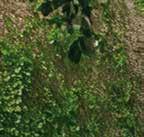
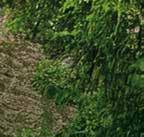








Fully


Creative à la carte incentive trips

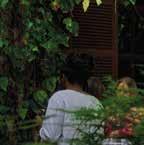








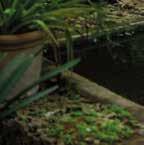

Heading




Benefit from our years of experience and network

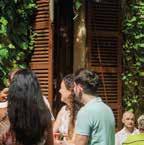


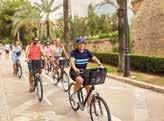




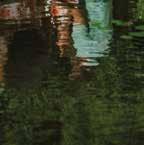
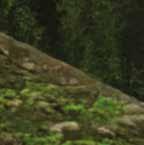



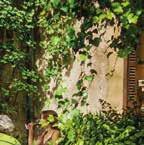

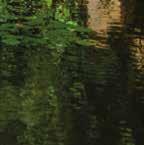





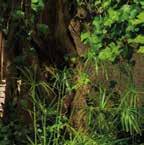

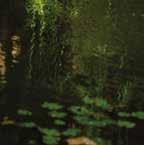




Luxemburg is closer than you think. This lovely small city in an evenly small country has a great and diverse heart. Hints of Germany, a whiff of Belgium, and definitely French je ne sais quoi. That means the food is good, and so are the beers. It’s a perfect getaway close to home for any kind of trip, from a weekend of exploring to important corporate gatherings. And for that, there is a very well-located new, well old, hotel that not too long ago reopened its doors under the mighty Marriott flag.
Indeed, the Grand Duchy of Luxembourg, a powerhouse of European finance and a jewel box of history, has a new old landmark to boast about: the freshly minted Luxembourg Marriott Hotel Alfa. After a sensitive and thorough renovation, this historic 1932 monument, which once hosted generals Patton, Bradley, and Eisenhower, has reopened its doors, blending its Art Deco heritage with Marriott’s modern premium approach. And for visitors to this compact but powerful capital, the hotel’s location is nothing short of a strategic asset.
Forget any notions of a cookie-cutter corporate hotel; the Alfa has a palpable personality. The architectural firm, Iria Degen Interiors, clearly respected the building’s lineage. Throughout the public spaces and the 153 guestrooms (including 31 suites), the Art Deco spirit
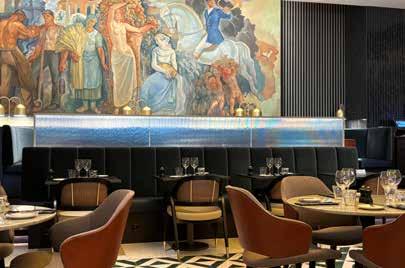
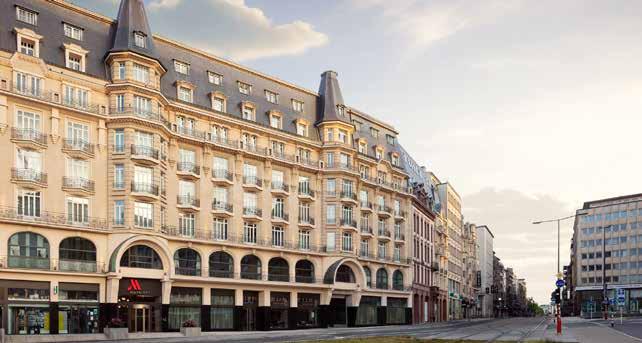
shines through. From the preserved original façade details to the striking zigzag motifs, soft curves, and rich material palette—think Palisander wood, marble, and metallic accents—the design is cohesive and elegant, avoiding the pitfall of theme-park history. It genuinely feels like stepping into a glamorous 1930s vision, albeit one with excellent Wi-Fi and air conditioning.
The rooms themselves are generous, particularly the suites, which reviewers note are remarkably spacious. The petrol blue of the standard rooms and the olive and pink hues of the suites, inspired by restored local artwork, lend a sophisticated yet inviting atmosphere. Comfort is clearly a priority, with guests consistently praising the quality of the bedding and the soundproofing—a necessary feature given the hotel’s position.
Beyond the aesthetics, the service receives universal praise. The staff are repeatedly described as ‘outstanding,’ ‘attentive,’ and ‘genuinely welcoming,’ suggesting a well-trained team that understands the difference between five-star compliance and genuine hospitality.
For business travellers, the Alfa is more than just a place to rest. The hotel offers five dedicated meeting rooms, all boasting natural daylight and a view over the train station plaza. This combination of a prestigious, centrally located venue with modern meeting facilities makes it an excellent choice for corporate retreats or smaller conferences seeking a memorable, design-led backdrop.
The hotel’s culinary offering, Brasserie Alfa, is ambitious. It aims to be a new social hub, offering a refined take on classic Luxembourgish and French cuisine. The commitment to local sourcing and elevated classics like saucisses purée and frites à la graisse de bœuf is admirable, alongside the usual classics. I opted for a delicious eggs mayonnaise with a glass of great local wine and a steak-frites with a French red. All very nice. For those with M Club access, the executive lounge is reportedly a high-quality retreat, offering substantial evening snacks.
The Connectivity of Luxembourg City
While the Alfa’s elegant interior is a world unto itself, its location, directly opposite the main train station (Gare Centrale), is the key to exploring the city and beyond. Luxembourg City is a global connectivity hub woven into the European transport network.
Rail and Road: The main station is not just a domestic nexus; it’s a major international gateway. High-speed rail services, including the TGV, link the city directly to major capitals like Paris in just a few hours. Regular
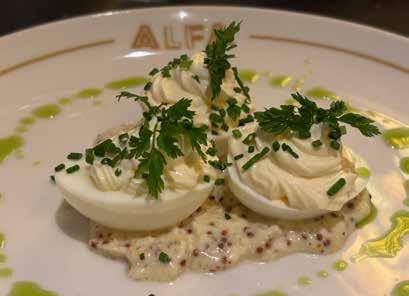
international rail lines also connect the Grand Duchy seamlessly with Brussels, Trier, Koblenz, Metz, and Nancy. By car, the country sits at the intersection of major European highways, making quick trips to its neighbours easy.
Air: Luxembourg Airport (LUX) is only about 6km from the city centre, served efficiently by public transport. While small, it acts as a significant cargo hub and a passenger gateway with Luxair and other carriers offering direct flights to major European and global destinations.
Crucially, once you arrive, the entire Grand Duchy is effortlessly navigable thanks to the free public transport system, a major perk for any visitor. The city’s new tram line runs directly past the hotel, connecting the station to the city centre, the European institutions in Kirchberg, and the airport (via a short connection). The hotel’s immediate proximity to the station and its free public transport connections make it the perfect base—whether you are heading to the business/EU side of town or for a more old-time charm approach in the city center. In short, the Luxembourg Marriott Hotel Alfa is more than just a place to sleep. It’s a beautifully executed blend of history and comfort, run by a stellar team, and positioned perfectly for the international traveller and the business crowd, ready to explore a city that, despite its size, remains one of the best-connected and most culturally rich capitals in Europe. It’s a grand dame that has aged up.


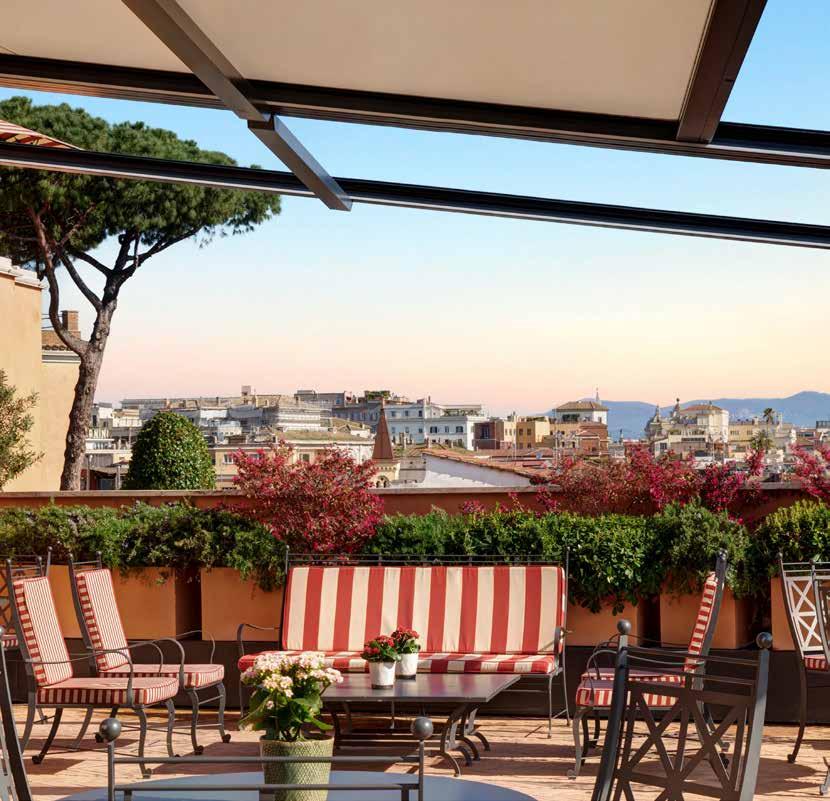
On the iconic Via Sistina, overlooking the famous Piazza di Spagna and the majestic Trinità dei Monti, lies Hotel de la Ville — a true gem within the prestigious Rocco Forte Hotels collection. This five-star property masterfully combines historic grandeur with contemporary comfort.
From the moment you step through the door, you are immersed in an atmosphere of refined Italian elegance and indulgent luxury. The location is simply perfect. Bordering the lush Villa Borghese gardens and within
Tijn Kramer Editor-in-Chief SUMMIT Benelux
walking distance of Rome’s most iconic landmarks and exclusive boutiques, it feels as though the city is at your feet. The hotel takes full advantage of its unique setting, blending the stay seamlessly with the city’s rich history and vibrant energy.
The history of Hotel de la Ville is deeply intertwined with Rome’s cultural heritage. The building dates back to the 18th century and played a prominent role during the Grand Tour — the cultural journey once considered essential for Europe’s aristocracy. It was
here that nobles stayed to immerse themselves in art and architecture. Officially classified as a hotel in the early 1920s and expanded in the 1950s, its true transformation came in 2019, when it joined the Rocco Forte Hotels collection after a meticulous two-year renovation.
What immediately stands out is how the hotel has preserved its historical character while seamlessly integrating modern luxury. The interiors were designed by Tommaso Ziffer in collaboration with Olga Polizzi, inspired
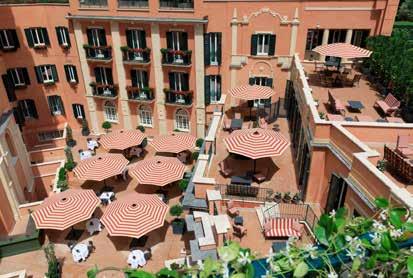
by the spirit of the Grand Tour — a time when English and German aristocrats traveled through Europe collecting art. This theme is beautifully reflected in every detail of the hotel, from handcrafted Italian textiles to the carefully curated artworks adorning the walls. The courtyard, redesigned by garden architect George Carter, offers an oasis of calm amidst the bustle of Rome — a serene, romantic setting complete with obelisks and soft lighting reminiscent of candlelight.
The rooms and suites at Hotel de la Ville offer a truly luxurious experience. With 104 accommodations across several categories, the hotel provides a range of equally elegant options. The rooms are spacious and sophisticated, featuring carefully selected furnishings and a refined mix of classical and contemporary styles. The bathrooms, crafted entirely from Italian marble, exude opulence and are stocked with exquisite Irene Forte Skincare products. For those looking to indulge, the Penthouse Suite delivers an unparalleled experience. Spread across two floors, it features private terraces with breathtaking views over Rome — ideal for families or groups. Even the “standard” rooms impress with their elegant design
and top-tier amenities, including king-size beds, smart technology, and beautiful views of the city or tranquil courtyard.
But Hotel de la Ville is much more than a place to stay — it’s a culinary and social destination in its own right. Although we didn’t have the chance to dine, a visit to the Cielo Terrace Bar is an absolute must. Located on the sixth and seventh floors, it offers not only sweeping views over Rome’s rooftops but also a refined selection of cocktails and light dishes. This is the place to end your day with a glass of wine as the sun sets behind the Eternal City. The versatile event spaces make the hotel ideal for weddings, business meetings, or
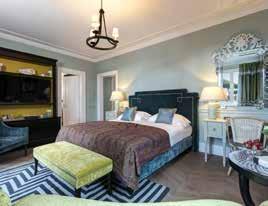

intimate dinners. The combination of historic elegance and modern facilities ensures every occasion is unforgettable. And for those seeking relaxation, the Irene Forte Spa provides the ultimate sanctuary.
This five-star haven is not only the perfect base from which to explore Rome, but also one you’ll want to linger in — savoring every luxurious moment.


Introducing a real ‘Flying Dutchwoman’. Sterre Tolsma (30), proud KLM flight attendant. A candid Q&A about schedules, favorite routes, generation gaps, mental health, love, safety on board, and why this profession remains irresistibly addictive.
How long have you been flying, and on which routes?
I started just before COVID hit, then was grounded for two years. I’ve now been back in the air for three years — about four in total with KLM. We alternate between European and intercontinental routes. KLM has a great bidding system where you can request the destinations you’d like to fly to. You can be very specific — say you want that one flight to San Francisco — or you can simply bid for a “Europe week.”
How does a Europe week differ from an intercontinental rotation?
European trips are often sameday returns — we call those ‘op en
neertjes’ (“up-and-downers, ed” or sometimes just a single night in a hotel. Intercontinental rotations are longer, of course, with layovers at the destination. Take Los Angeles, for example: that’s a tough one because of the nine-hour time difference. They’re long and busy flights. That trip is what we call a “four on six” — four days away, six days off. You lose almost a full day getting there, have 48 hours off in LA, then one full day flying back. There are different patterns though — sometimes you’re only 24 hours downroute, sometimes a bit longer.
Do you know your schedule in advance?
Yes — everything’s visible in the
system. We can see all the flights up to five weeks ahead, and that’s also when our roster is released. So every Wednesday at 1 p.m. sharp, everyone’s refreshing their iPads in suspense: What’s on the roster this time?
Do you often fly with the same colleagues, or is it usually a new team each time?
There are around 9,000 of us in cabin crew, yet you’re surprised how often you run into familiar faces. You can see your crew about two weeks in advance on your iPad, and we usually start a group chat. You can also “buddy bid” with a regular flying partner — it’s not guaranteed, but it improves your chances.
What are your personal favorite destinations?
When I first started, I was blown away by the big cities — New York, Tokyo, Bangkok — I couldn’t get enough. Now, I’ve grown to appreciate nature more. Salt Lake City really surprised me; we drove out to Yellowstone, and I was in awe of nature’s wonders. On my bucket list now: taking the Shinkansen through Japan and doing a gorilla trek in Rwanda, like my family once did.
How did you end up in aviation?
I’m from a real KLM family. It started with my grandfather, who was an F-16 pilot. My grandmother was an air traffic controller at Eelde Airport. He heard her voice over the radio during a landing and thought, “I need to meet her.” He went up to the control tower — and that’s how they fell in love. He later switched to civil aviation, and my uncle also flew for KLM — he retired two years ago as a captain. Now his son, my cousin, flies for KLM Cityhopper as a captain. And me — the niece — in the cabin.
Ever thought of sitting in the cockpit yourself?
No, I actually studied hotel management. I’m drawn to service and

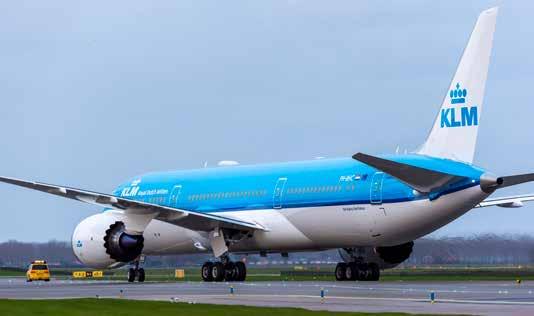
discovery rather than the technical side. I love caring for people and creating experiences. Hospitality is my element.
When did you decide you wanted to work in aviation?
I was sixteen. My best friend was my cousin — the daughter of my uncle, the pilot. He once asked if we wanted to join him on a flight. He handed us a list of possible destinations, and we picked Shanghai. So off we went, in the cockpit. The door opened, and I knew instantly — this job was so much more than handing out meals and flying back. The teamwork, the laughter, the postflight drinks, exploring new cultures together… I thought, I want this too After finishing my hotel school degree, a KLM vacancy opened up — my friends and sorority sisters who worked there
sent it to me: “Just try it!” I did — and that’s how I rolled into KLM.
Every job has downsides. What are yours?
Flying through the night from Salt Lake City, fighting turbulence, serving breakfast at sunrise while running on fumes — those are the moments you think, why did I choose this again? But the team and passengers usually lift you back up. Still, it can be tough. You have to be physically resilient. I’m lucky — I can sleep anywhere. But if you can’t, this job will wear you down. When you return home, you really need to rest — people think you’re “off,” but your body needs to reset. And yes, it’s frustrating when you miss a party or an important day.
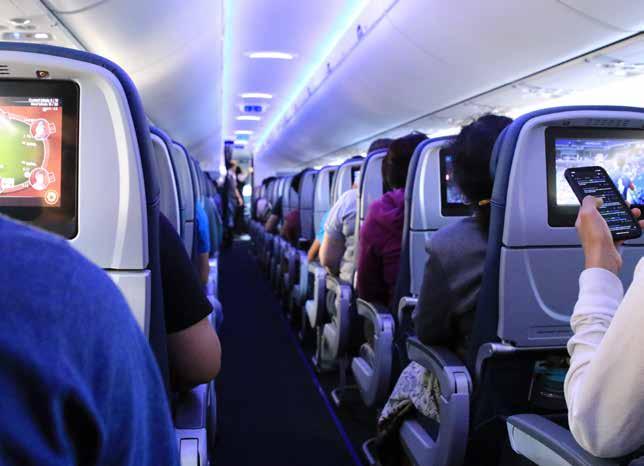
Arriving in Nuremberg in wintertime, you feel it immediately: the scent of spices and freshly baked gingerbread in the air, the soft glow of lights on centuries-old facades, the hum of voices at the legendary Christkindlesmarkt. Yet behind the festive charm lies one of Europe’s most dynamic business and innovation hubs, making Nuremberg a truly exceptional destination for meetings, incentives, and corporate events.
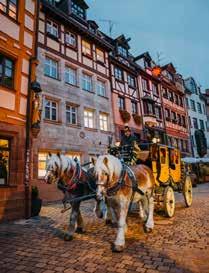

For more than 700 years, Nuremberg has been a meeting point for traders, travellers, and thinkers. Once renowned for its metal goods, textiles and spice merchants, today it stands as a centre of science, technology, and design. The same spirit of curiosity and exchange that shaped Nuremberg’s medieval trade routes, now drives its modern economy. Alongside global players, countless hidden champions call Nuremberg home –medium-sized companies whose innovation, quality, and global reach define the city’s economic strength.
Long known as the “City of Inventors,” Nuremberg’s inventive spirit runs deep – from pioneering clockmakers and early printers to today’s engineers and innovators whose ideas shape the technologies of tomorrow. World-class research takes place not only at major universities but also outside the academic environment at many internationally famed research institutions and user centres. These involve a close link between business and science, and encourage interdisciplinary cooperation oriented to applications and solutions.
Business with a Touch of
Nuremberg offers such a captivating setting for professional gatherings. From atmospheric meeting spaces in heritage buildings to state-of-the-art venues
and diverse conference hotels, everything is within easy reach. Imagine closing a deal, then stepping into a world of lights, laughter, and the unmistakable aroma of roasted almonds and hot mulled wine.
True to its legacy as a city of trade and innovation, Nuremberg continues to value authenticity and responsibility. Many venues focus on sustainability, regional sourcing, and short travel distances – principles that align perfectly with modern event planning. The result is a destination that feels both timeless and future-ready: where handcrafted tradition meets hightech innovation, and every meeting carries a sense of place and purpose.
Nuremberg: Where the spirit of the season meets the pulse of business. Authentic, inspiring and welcoming.
Catch a glimpse of Nuremberg’s charm at IBTM Barcelona: Visit NürnbergConvention at booth F70-13! https://www.nuernberg-convention.de/en

How do you balance work and private life?
I’m lucky — my family’s used to this lifestyle. My grandparents always said, “If you’re there, you’re there; if not, that’s fine too.” My boyfriend travels a lot for work as well — we actually met in Buenos Aires. My friends have grown used to it too — I started flying while still in a student house, so they adapted. I don’t have kids, which makes it easier. But I can imagine it’s trickier with a family.
What role does your crew play in your life?
Depending on the aircraft, we’re roughly 12–14 cabin crew per flight. We usually start a WhatsApp group. The bond is often strong — some hang out together off-duty, others do their own thing. But what’s special is how quickly you connect. You meet at briefing — just 15 minutes before the flight — and by the time you’re walking through security, people are already sharing their life stories. There’s a lot of openness. Sometimes it’s nice to talk freely in the galley — your colleagues don’t know your entire social circle, so it feels safe. It creates real connections — some temporary, some lasting. Mental fitness is crucial too. Absolutely. That bond within the crew is vital — you can talk things through mid-flight. KLM also organizes follow-up days to check in on well-being, sleep, and roster balance. It really helps.
Any tips against jet lag?
Find what works for your rhythm. In the U.S., I prefer waking up early and seizing the day; in Asia, I stay up late. Before a long flight, I nap one to two hours. On board, we rest in the OCR (Overhead Crew Rest). Food helps too — avoid fast sugars, eat protein and salads. And move! Compression socks are lifesavers.
Aggression on board has become a growing issue. How do you handle it? Personally, I’ve never faced serious aggression, but we’re well-trained for it. We’re trained to scan passengers as they board — if someone gives you a gut feeling, you act early. Once, on

a Cape Town flight, we suspected a passenger was sneaking their own liquor. We calmly discussed it with the purser: had they been drinking? Is it safe? Can we confiscate the bottle and return it later? In that case, we did — and the man slept the whole flight. Early intervention works.
We also train with the Royal Netherlands Marechaussee and professional actors who simulate aggression. We learn proper intervention techniques. If necessary, we issue a formal Notice of Violation on behalf of the captain — an A4 warning explaining the rules and that behavior must stop. Since implementing it, we’ve seen fewer incidents. It forces
Some fun questions:
Favorite aircraft:
The Boeing 787 Dreamliner — quieter, better air quality, and you arrive more rested.
Uniform essentials:
A standard KLM kit: suitcase, jacket, apron — and even a KLM pajama for rest periods, for safety recognition during evacuation.
Heels or KLM sneakers?
Sneakers are a newer option — I’m still a heels girl, but my knees are hinting I should switch soon.
Always in my suitcase: Earplugs, my own tea, workout gear for a fresh start — and I pack as light as possible.
passengers to realize: you’ve crossed the line
Flying is also under public scrutiny in the Netherlands. How do you deal with that?
Yes, sometimes people make remarks. But those same friends also love flying to Bali. We shouldn’t forget — everyone still wants to explore this planet, even 20 years from now.
I truly believe KLM leads the way in responsible, innovative flying. Of course, it’s an important debate, but if we do fly, we should do it consciously and responsibly. KLM invests heavily in that — and ultimately, aviation connects people, cultures, and families. That’s what keeps it meaningful.
Favorite places & souvenirs:
Restaurant Salsify at the Roundhouse in Cape Town — a heavenly lunch with a view. Souvenirs? The mini KLM planes from Lima, a beaded statue from South Africa, and too many silk “flowers” from Bangkok.
Countries visited:
At least 40–50 and counting.
Would you recommend aviation to your future children?
I’d never push it — but yes, if you love adventure, people, and service, it’s amazing. Just not if you need strict routines or struggle with sleep. Flying’s not just a job — it’s a way of life.

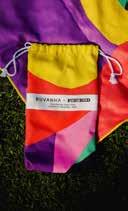
For its sixth limited-edition travel towel, Dutch brand Buvanha teams up with artist Petra Verkade to celebrate the harmony of art, architecture, and nature on Japan’s famed Naoshima Island. Known as the “art island,” Naoshima’s serene balance between concrete minimalism and the organic flow of sea and landscape inspired Verkade’s latest design.
“I was fascinated by how rawness and refinement enhance one another,” Verkade explains. Drawing from the
work of Japanese artist Yayoi Kusama, her composition subtly echoes Kusama’s dots and sculptural motifs while capturing the light, shadows, and structural rhythm of Naoshima’s museums. The design began entirely by hand — cutting, tearing, and sketching collages before translating them digitally. “Japanese culture honors craftsmanship in everything from ceramics to tea rituals,” she says. “I wanted to bring that same sense of care into my process.”
As with previous Buvanha collaborations, the project supports a cause close to the artist’s heart. Verkade chose Het Sieboldhuis museum in Leiden, which showcases Japanese art and design in the Netherlands — a fitting connection between two cultures defined by quiet sophistication.
Swedish outdoor heritage brand Fjällräven celebrates its roots with the launch of the Expedition Down Black Edition, a limited run of 900 jackets inspired by the pitch-black winter skies of the Scandinavian north.
This new edition pays tribute to a defining moment in the early 1970s when founder Åke Nordin endured a freezing night in Abisko, Sweden, and vowed never to feel cold again. His solution was revolutionary — two down jackets sewn together for maximum warmth — and became the legendary 1974 Expedition Down Jacket.
Today, the Black Edition continues that legacy, merging vintage design with modern craftsmanship. Every detail stays true to the original purpose: keeping adventurers warm on the coldest expeditions.
The jacket embodies Fjällräven’s commitment to durability, functionality, and timeless Scandinavian design — a testament to Nordin’s enduring philosophy: never feel cold again.

Canon has announced the EOS C50, its most compact Cinema EOS full-frame hybrid camera designed for today’s filmmakers and content creators. Despite its size, the C50 delivers cinema-grade power with a 7K full-frame sensor and DIGIC DV7 processor, enabling RAW 7K recording at 60P and 4K slow motion up to 120P.
The C50 marks Canon’s first Cinema EOS model with open gate recording, allowing full-sensor capture for easy reframing across horizontal, vertical, or square formats — ideal for crossplatform creators.

Lightweight yet robust, the camera’s modular build suits handheld, gimbal, or mounted use. The detachable handle includes XLR audio inputs, and compatibility with RF, EF, and PL lenses ensures full creative flexibility.
Dual CFexpress and SD card slots, plus Frame.io Camera-to-Cloud integration, make for seamless collaboration. The Canon EOS C50 is a compact powerhouse for creators who demand cinematic quality — wherever they shoot.
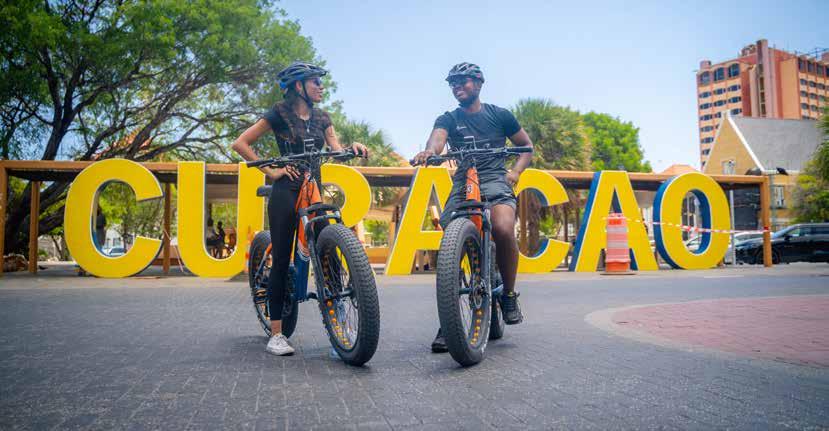
At FBTT Travel, we do more than just transport your guests. We craft meaningful, memorable experiences from A to Z.
With more than 65 years of expertise, we’re Curaçao’s trusted and largest Destination Management Company (DMC), offering seamless group transfers and fully customized tours tailored to your clients’ needs and preferences.
From private airport welcomes to curated island adventures, we manage every detail with care. Our diverse fleet from 9-seaters to 55-seater coaches ensures comfort, style, and efficiency for any group size.


Whether it’s beachside dinners, cultural tours, or nightlife experiences, we’re here to make it effortless and unforgettable.
Let us go the extra mile for your group. With FBTT Travel, every journey is a story worth telling.
Website : www.fb-tt.com | www.curacao-tours.com
Email : groups@fb-tt.com. Telefoon nummer : +599 9 869 9559




Mercedes-Benz, in collaboration with Universal Music Group and Dolby Laboratories, has unveiled a revolutionary concept: “Crafted in a Mercedes” — transforming the backseat of a MercedesMaybach into a fully functional Dolby Atmos sound studio.
This mobile creative hub allows producers and artists to record, mix, and fine-tune music on the go, with audio performance matching that of professional studios. The system offers individualized control over the car’s multi-speaker setup, enabling precise sound engineering from the rear cabin.
Unveiled at Interscope Studios in Los Angeles, the launch event featured FINNEAS and Aron Forbes, both lauding the project’s potential. “It was amazing to create and edit music in such a refined space,” FINNEAS said.
More than innovation, “Crafted in a Mercedes” embodies a new creative freedom — merging luxury, technology, and artistry. As Mercedes CTO Markus Schäfer summarized, “We’re setting new benchmarks not only for automotive luxury, but for how and where music can be made.”
Iconic Islay whisky brand Laphroaig has partnered with acclaimed actor Willem Dafoe for a global campaign titled “The Taste” — a cinematic exploration of the brand’s distinctive spirit and individuality.
The short film, part of Laphroaig’s “Unphorgettable” series, follows Dafoe’s whimsical quest to define the elusive flavor of Laphroaig. Drawing from his own life stories, the film embraces curiosity, humor, and authenticity — qualities shared by both actor and distillery.
Shot with cinematic flair, “The Taste” underscores Laphroaig’s 200-year heritage of uncompromising craftsmanship and distinctive flavor. The collaboration also teases a limitededition whisky, soon to be unveiled globally. As Dafoe muses in the film, “You can’t quite describe it — you can only experience it.” With that, Laphroaig invites the world to savor individuality — one unforgettable sip at a time.
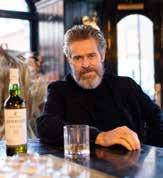
Swiss watchmaker Breitling presents the Lady Premier Collection, a contemporary reinterpretation of the brand’s elegant Premier Fantaisies models from the 1940s. With shimmering ombré finishes, layered dials, and sculpted silhouettes, the collection celebrates women of confidence and grace.
The 36mm automatic models feature radiant dial tones — aubergine, sage, and dove grey — paired with matching alligator straps, while a gold edition with a chocolate-brown gradient exudes quiet luxury. The smaller 32mm quartz
models introduce a delicate seven-row Chevron bracelet, motherof-pearl dials, and fluid diamond-set bezels.


“Lady Premier redefines elegance for the modern woman,” says Georges Kern, CEO of Breitling. “It’s confident, refined, and characterful — just like the women who wear it.”
Crafted with responsibly sourced gold and traceable lab-grown diamonds, Lady Premier unites past and future — proof that true sophistication never goes out of style.





Indepenedent broker - IATA accreditedNL FR EN spoken customer serviceResponse within 24h - State of the art technology - Group specialist

Are you flying with a group of 10 or more people from A to B? Then a group flight is the ideal choice! You benefit from advantages such as a fixed price for all passengers, favourable payment terms and flexible cancellation options. Perfect for organising events!
Are participants flying from different locations to the same destination? Then we will create a personalised web page with our advanced booking engine. Participants can easily book their flight based on predetermined criteria. Payment can be made by credit card or, if the organiser is covering the costs, by direct debit or deposit.
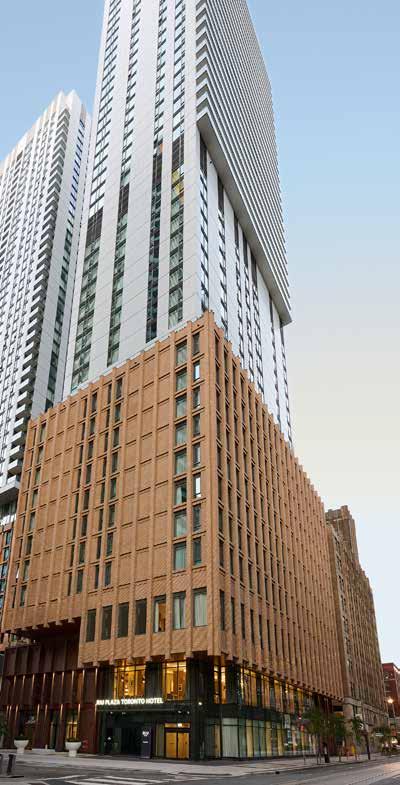
RIU Hotels & Resorts has reached a new milestone in its international expansion with the grand opening of the RIU Plaza Toronto, the Spanish hotel group’s very first hotel in Canada.
integrates advanced energy-efficiency systems, including combined heat and power plants that simultaneously generate electricity and heat, thus reducing greenhouse gas emissions. In addition, water-saving measures and waste reduction programs are implemented to further reduce its environmental footprint.
Located at 30 Widmer Street in the vibrant Entertainment District, the RIU Plaza Toronto is an ideal base for both business trips and city breaks. Just steps away are some of the city’s most famous attractions—including the Princess of Wales Theatre, David Pecaut Square, Rogers Centre Stadium, and the iconic CN Tower—while excellent transportation links provide guests with easy access to the rest of the city.
The hotel occupies 23 floors of one of two newly constructed, identical skyscrapers, each with 49 floors. Its striking façade combines historic charm and modern elegance: a brick-clad base that harmonizes with Toronto’s heritage buildings and a sleek glass tower that adds a bold, contemporary touch to the skyline.
This newly built four-star hotel brings RIU’s signature urban style and hospitality to the heart of Toronto’s iconic skyline.
The signature RIU Plaza breakfast buffet is served—included with every stay. Throughout the hotel, a contemporary yet warm interior design combines matte chrome accents, beige tones, and elegant furnishings. This creates inviting common areas with a perfect balance of comfort and sophistication.
The RIU Plaza Toronto features 352 modern rooms, a fully equipped 24/7 gym, and a flexible meeting room for up to 40 guests.
The hotel caters to both business travelers and urban tourists seeking convenience and comfort. In line with RIU’s Proudly Committed sustainability strategy, the hotel
The opening in Canada marks a significant step for RIU, as Canadian travelers have been loyal to the brand for years thanks to their experiences at RIU’s beach resorts in the Caribbean, Mexico, and Central America. Now, for the first time, guests can experience the RIU feeling without leaving the country.
The RIU Plaza Toronto is the twelfth hotel in the brand’s growing urban collection, joining RIU Plaza hotels in Panama, Guadalajara, Madrid, Miami, Chicago, San Francisco, New York, Berlin, London, and Dublin. With this new opening, RIU strengthens its presence in some of the world’s most dynamic cities—and Toronto marks the latest major milestone.


Delhi, a city where ancient empires meet the cutting edge of modern commerce, is emerging as far more than a conference hub for corporate groups. It is a vast, vibrant playground perfect for transforming a standard MICE trip into an unforgettable experience. One hotel has made a name for itself when it comes to large conferences and any other sort of small or big mice-event.
Business, Banquets, and the Blue Bar.
It’s a household name in Delhi, India even. Taj Hotels. And The Palace in Delhi is amongst the very best known. Especially for MICE. But the first thing that strikes you about the Taj Palace, New Delhi—its mastery of tranquility. Spread across six acres of manicured, lush greenery in the diplomatic enclave, the crescent-shaped structure stands as a monument to luxury, blending Mughal-inspired architecture with modern sophistication. It’s an urban retreat that has, for decades, hosted everyone from heads of state to global business leaders. For the discerning business traveller, the Taj Palace isn’t just a hotel; it’s a world-class convention center masquerading as a palace. The sheer scale and versatility of its meeting facilities are what truly set it apart. The hotel boasts a spectrum of indoor venues—upwards of eleven—plus two beautifully maintained lawns, totaling over 48,000 square feet of event space.
The crown jewels are undoubtedly the Durbar Hall and the Shahjehan Hall. The pillarless Durbar Hall, with its capacity to seat over a thousand guests in a theatre style, is the premier site for global summits and large corporate extravaganzas. Its sheer size and opulence—complete with sparkling chandeliers—make any event, from a product
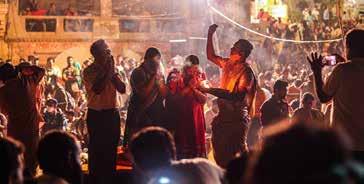
launch to a leadership conference, feel momentous. For slightly smaller, yet still grand, gatherings, Shahjehan Hall provides a versatile space reflecting regal elegance. Beyond these giants, rooms like Mumtaz, Jehangir, and smaller boardrooms like Alamgir and Vazir offer perfect breakout spaces, high-level board meetings, or intimate seminars. The expert events team ensures that audiovisual technology, dedicated service, and customized culinary experiences are flawlessly integrated, allowing guests to focus purely on the business at hand.
The end of a busy conference day at the Taj Palace means the start of a magnificent culinary journey. The
hotel is home to some of the capital’s most iconic dining destinations.
For an fun team experience, try a table at the Orient Express. The restaurant is themed entirely around the legendary European train, with polished wood paneling and brass fixtures that genuinely make you feel as if you are dining in a first-class dining car as it speeds across the continent. For those craving vibrant regional flavours, and I absolutely loved it and highly recommended it, Loya offers a deep dive into the authentic and long-preserved culinary traditions of the North Indian Subcontinent. It is a superlative example of culinary vision that spotlights the richness of slow cooking.This focus on traditional, age-old techniques and seasonal spices ensures every dish is a deep, flavorful exploration of the region’s heritage. Contrast this with the contemporary amazing cocktails they serve. Spicy Duck, which focuses on the established cuisines of Canton and Sichuan, offering stylish, contemporary Chinese dining. Finally, the all-day dining restaurant, Capital Kitchen, provides an international buffet with live theatre kitchens featuring European, Asian, and Indian comfort food favourites.
The perfect nightcap is found at The Blue Bar. With its chic, high-energy vibe and stunning views of the putting greens and poolside, it’s the
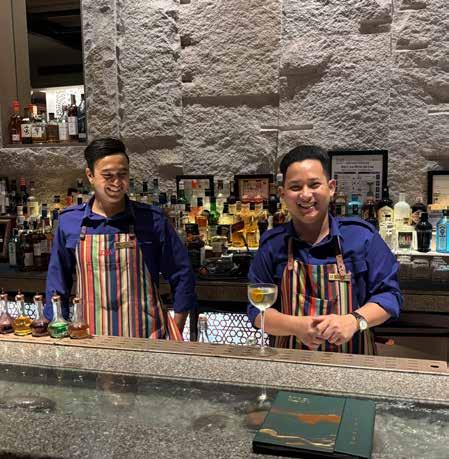
place to be seen or to simply disappear into the ambient lighting with one of their expertly crafted cocktails.
The overall ambiance of the Taj Palace is one of discreet, timeless luxury. The staff, known for the “Tajness” standard of service, greet you with personalized warmth that makes the sprawling property feel immediately intimate. With 403 rooms and 40 suites, many offering breathtaking views of the city’s protected forest greens, the accommodations are inspired by Mughal architecture, featuring rich tapestries, carved wooden panels, and fine carpeting.
The hotel ensures a sanctuary feel with modern amenities, including an expansive Jiva Spa, a temperaturecontrolled swimming pool, and a unique nine-hole putting green—a true urban oasis feature. Notably, the hotel has invested in a highly specialized electronic air filtration system, ensuring that guests breathe the purest air, a remarkable commitment to comfort and health in a bustling city. For those seeking elevated privileges, the Taj Club rooms offer exclusive access to the Taj Club Lounge and round-the-clock personalized butler service, truly cementing the hotel’s reputation as a sanctuary for the elite business and leisure traveler alike.
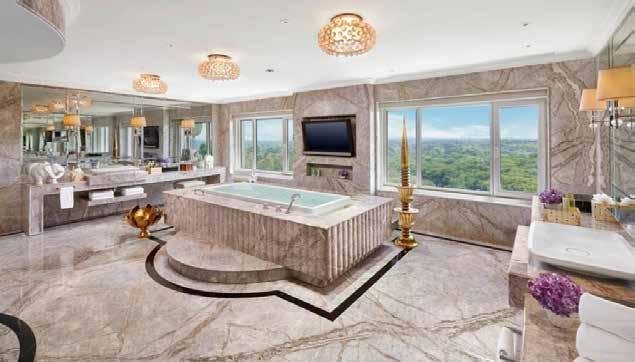














Travel smart and fast to Brussels South with Eurocity Direct. Running 16 times a day, just like EuroCity, it makes train travel more convenient than ever. From Amsterdam South, cut your journey time from over 3 hours to just around 2 hours.


If you want a frequent, quick, comfortable, sustainable, and direct journey – Eurocity Direct is the clear choice.

Arletta van Alteren, Accountmanager Business Travel

